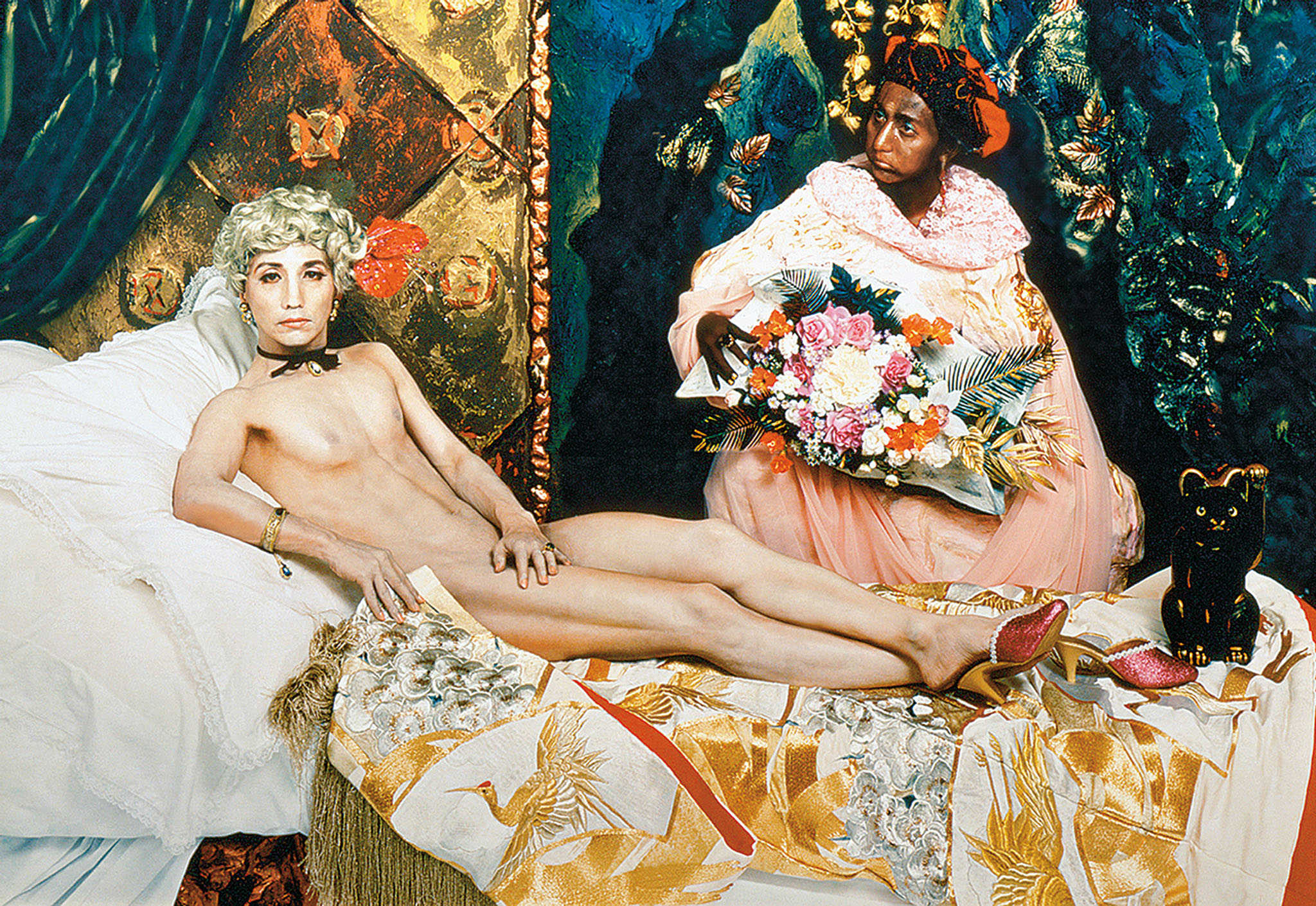Exam 3 Artifacts
1/32
There's no tags or description
Looks like no tags are added yet.
Name | Mastery | Learn | Test | Matching | Spaced |
|---|
No study sessions yet.
33 Terms
A Sunday on La Grande Jatte.
Oil painting on canvas. Made by Georges Seurat. Post-Impressionism Period. Fact 1: Seurat had a unique style of painting, not quite Impressionist, but a different style given the name Pointillism by Seurat himself. Fact 2: Instead of the wild brushstrokes classified by Impressionism, Seurat used calculated dots of color, or pointilless, to make up his images. Fact 3: He also believed that mixing color could evoke certain feelings. For example, when mixing red, orange, and yellow, he felt that this combination was a cheerful one. He also mixed cool tone colors like blue, purple, and green to evoke feelings of sadness.
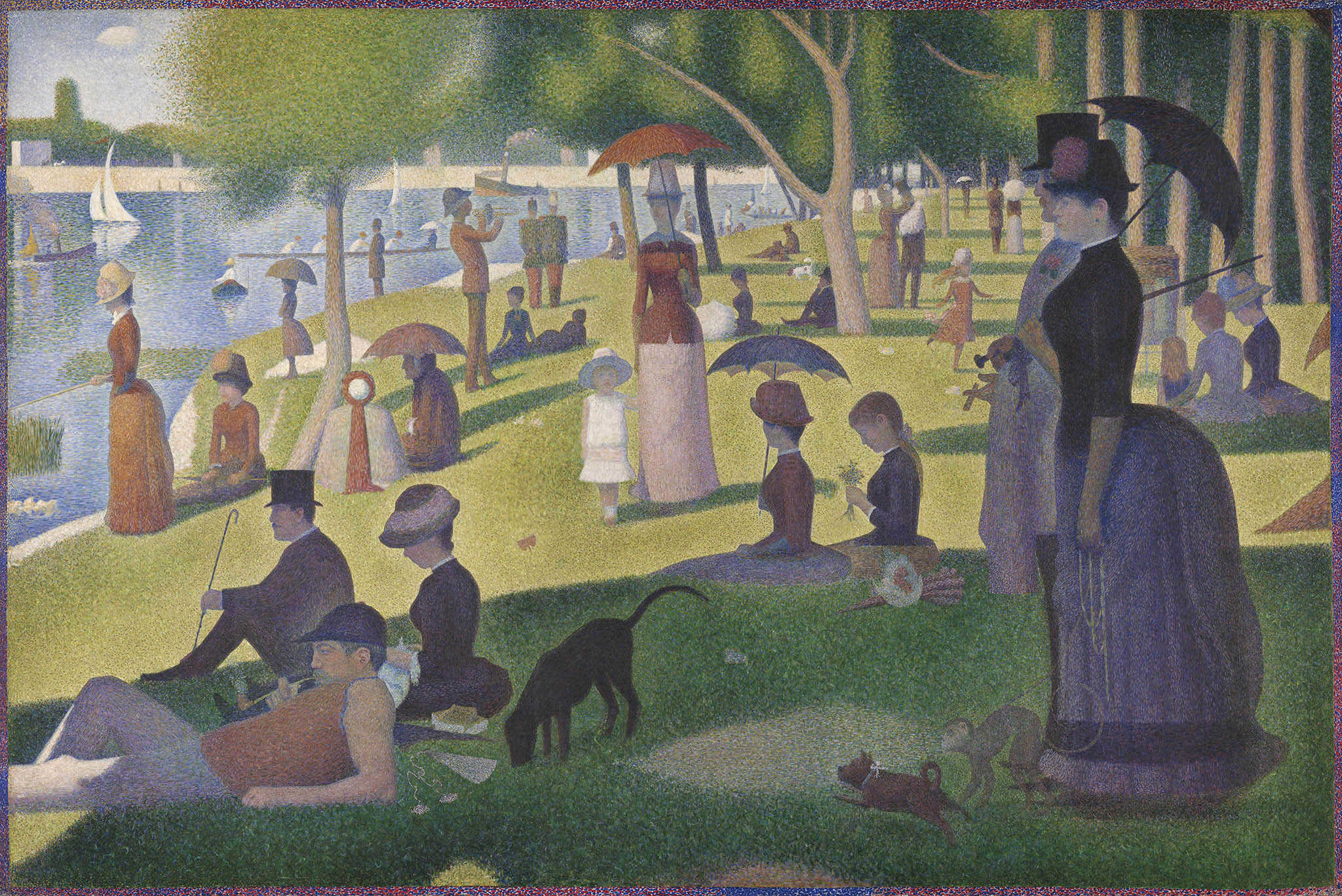
Night Cafe.
Oil painting on canvas. Made by Vincent van Gogh. Post-Impressionism Period. Fact 1: Van Gogh was influenced by Seurat's use of pointilles and color and drew inspiration from this to use in his own works, like Night Café. Fact 2: Van Gogh used contrasting colors, like red and green, to convey feelings of passion and emotional turmoil. He also wanted to convey the idea that the café is a place that takes in all kinds of people, good and bad. Fact 3: At the time, Van Gogh's paintings did not sell very well. Many viewers saw his unique brushstrokes of thick paint as a messy style. However, Van Gogh felt that his style represented his true self.
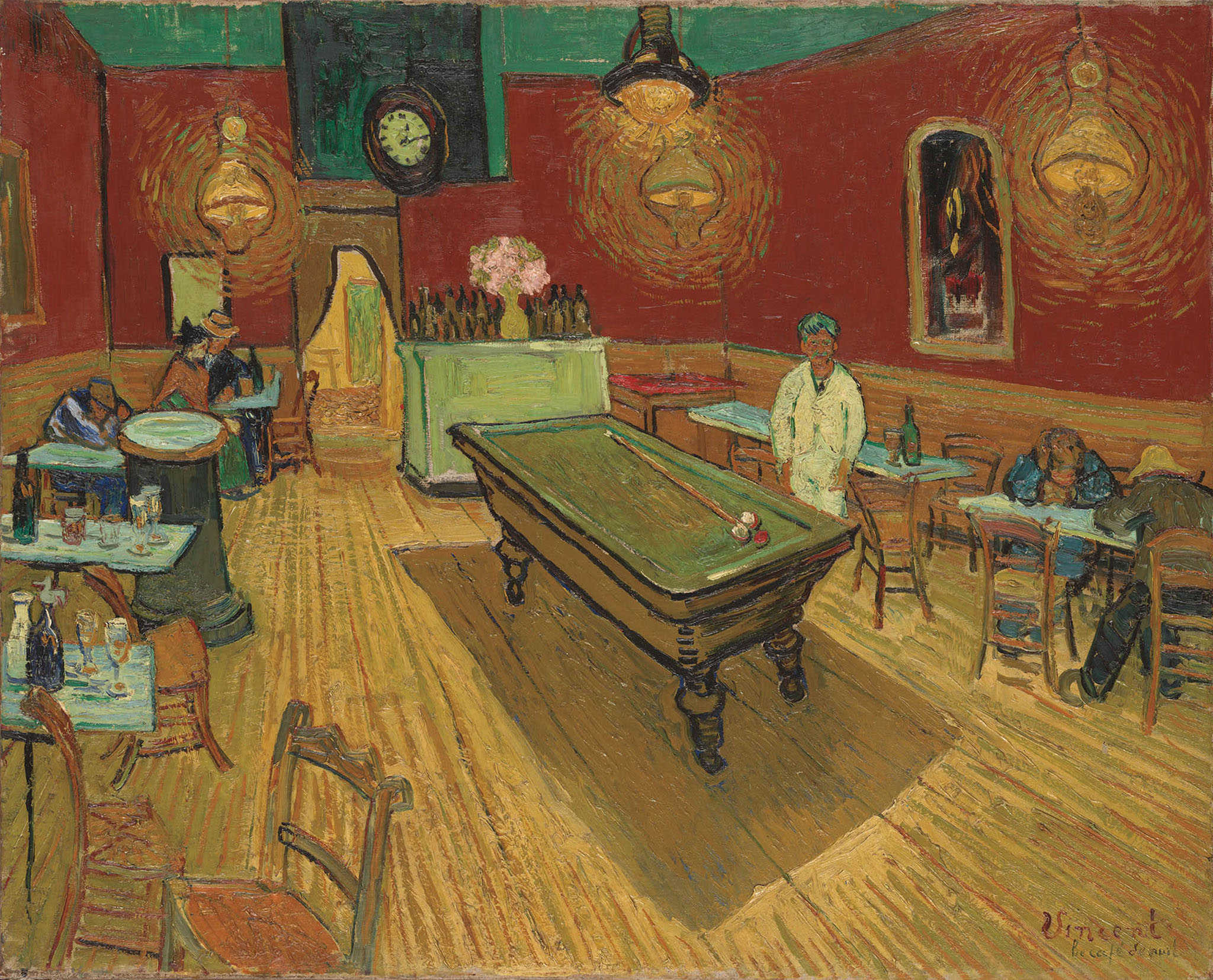
Starry Night.
Oil painting on canvas. Made by Vincent van Gogh. Post-Impressionism Period. Fact 1: Van Gogh struggled with his mental state and was even committed to a mental hospital near his home when he painted Starry Night. Fact 2: While the colors in this painting compliment each other well, the brushstrokes that show the wind blowing in the night sky could represent Van Gogh's inner struggles. Fact 3: Van Gogh often wrote letters about his works to his brother, including a letter about Starry Night. In this letter, Van Gogh describes that his feelings for nature are true to human emotion.
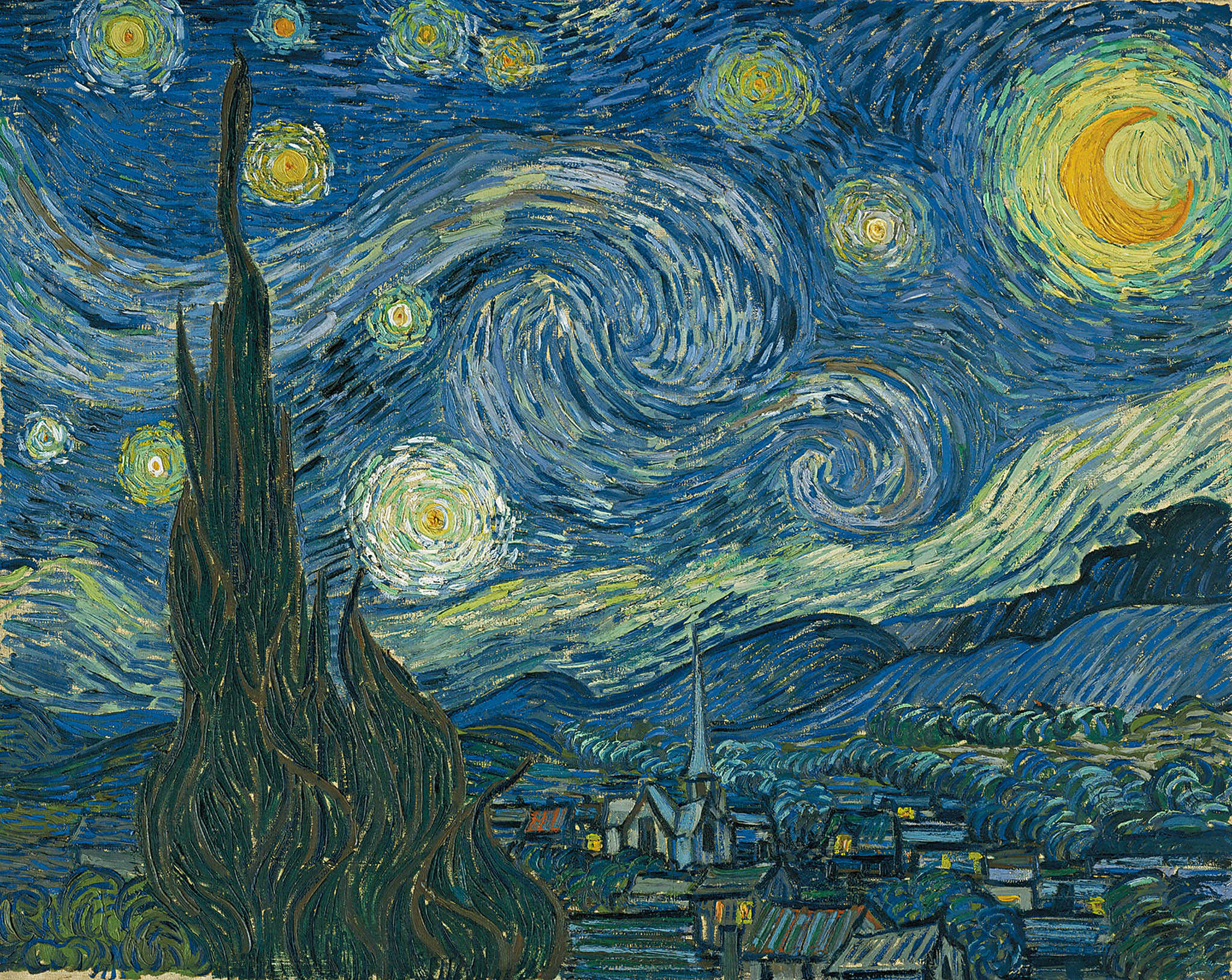
Mont Sainte-Victoire.
Oil painting on canvas. Made by Paul Cézanne. Post-Impressionism Period. Fact 1: Cezanne lived near Mont Sainte-Victoire, and painting this mountain became something he loved to do often. To get the best view of the mountain, he would climb a hill near his house, using the French practice of painting en plein air. Fact 2: This painting is divided into three sections of color. The foreground of the painting is mainly black and gray, the middle is green and yellow, and the top being blue and purple. Fact 3: Cezanne manages to keep his thick brushstrokes even and uniform all throughout the painting.
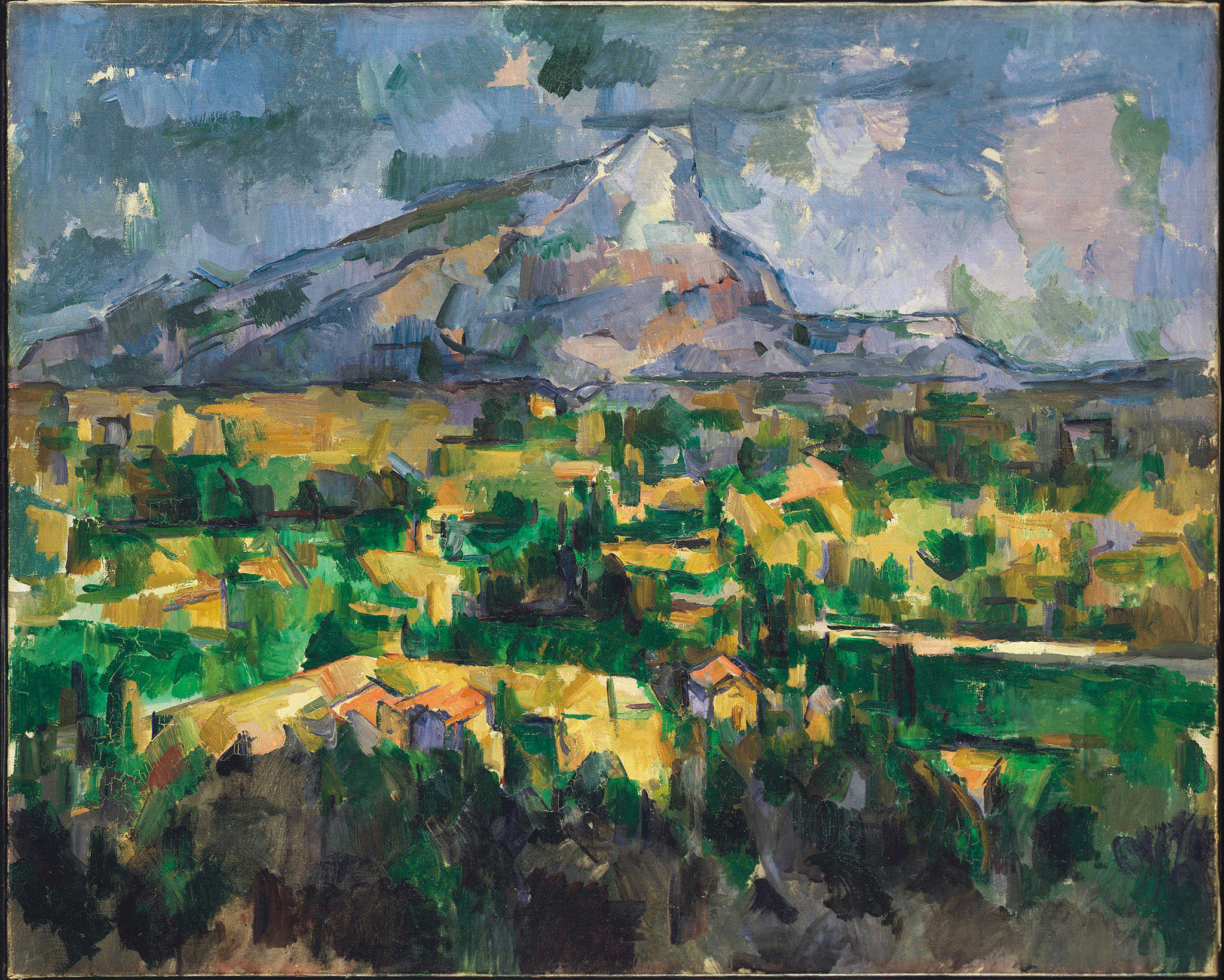
Day of the God.
Oil painting on canvas. Made by Paul Gauguin. Post-Impressionism Period. Fact 1: In 1891, Gauguin moved from France to Tahiti, where he lived for many years and painted works inspired by life on the island. Fact 2: The painting Day of the God appears to be divided into three sections. The top section features two people, likely carrying something to be sacrificed to the idol in the middle of the section. Fact 3: The second and third sections go together, with three nude female figures in the middle section. The figure in the middle sits with her feet in the colorful water of the third section. Gauguin uses color freely to express his inner emotions.

Gertrude Stein.
Oil painting on canvas. Made by Pablo Picasso. Cubism Period. Fact 1: This portrait by Picasso was the first time he had painted a posed portrait in eight years, and Gertrude Stein had to pose for the portrait ninety times. Fact 2: When painting Gertrude, Picasso struggled to paint her face, so he painted out her whole head and left it unfinished for nearly a year. Fact 3: When he finally finished the painting, he painted her face from memory and how he imagined her, not by looking at her. Because of this, her facial features appear to be painted in a slightly different style than the rest of the painting.
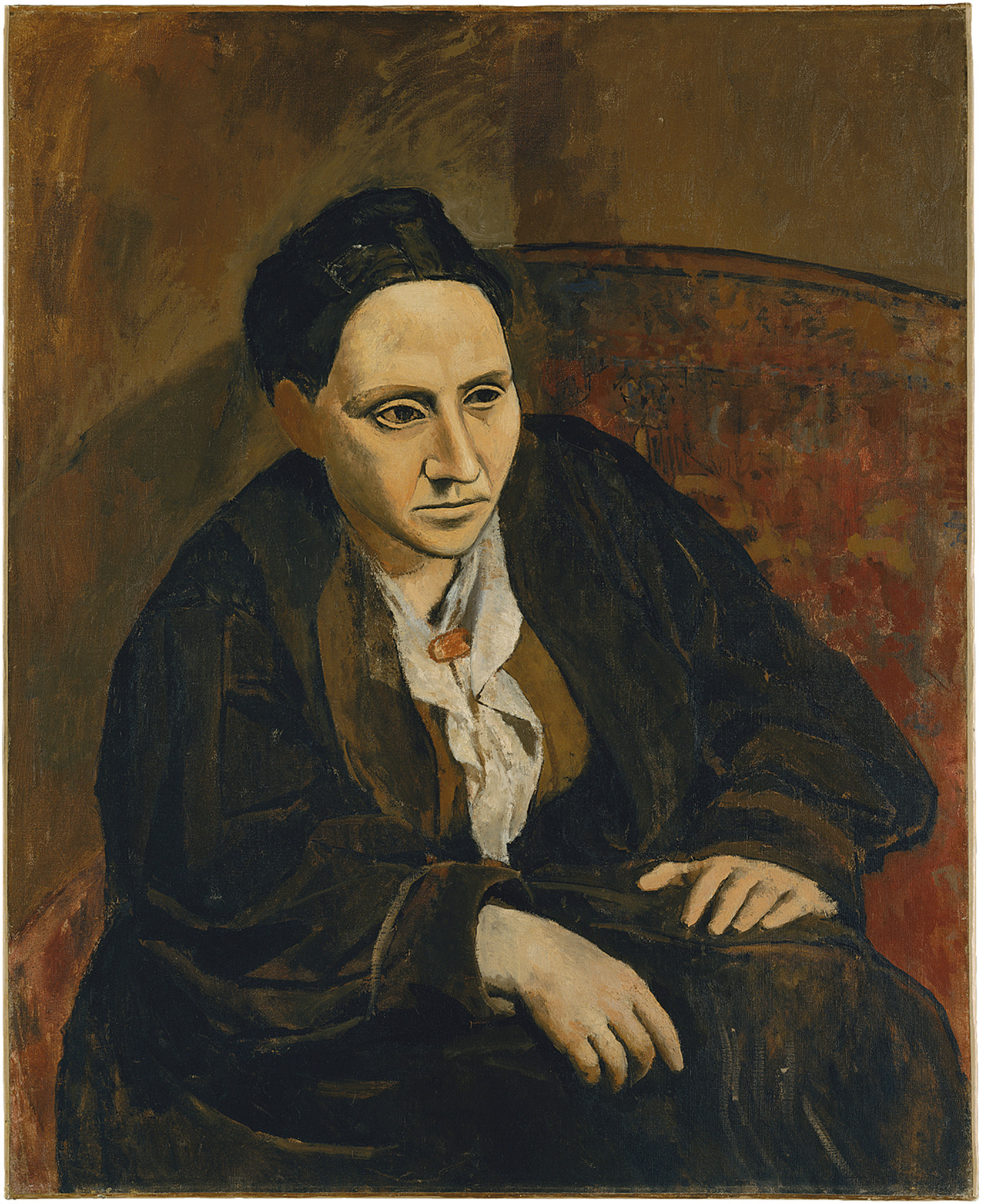
Les Demoiselles d'Avignon.
Oil painting on canvas. Made by Pablo Picasso. Cubism Period. Fact 1: The time in between the paintings Gertrude Stein and Les Demoiselles d'Avignon was a transition period into the style of modern art. This shifted paintings from literal constructs to imaginative ones. Fact 2: This is seen in Les Demoiselles d'Avignon, with the figures being painted much more abstract than previous works. Paintings were no longer focused on the subject matter being accurate, but instead focused on how the artist feels about what is being painted. Fact 3: This painting features five female prostitutes, looking directly at the viewer. Picasso admired Manet's work Olympia and drew inspiration from this work and its controversial sexual nature.
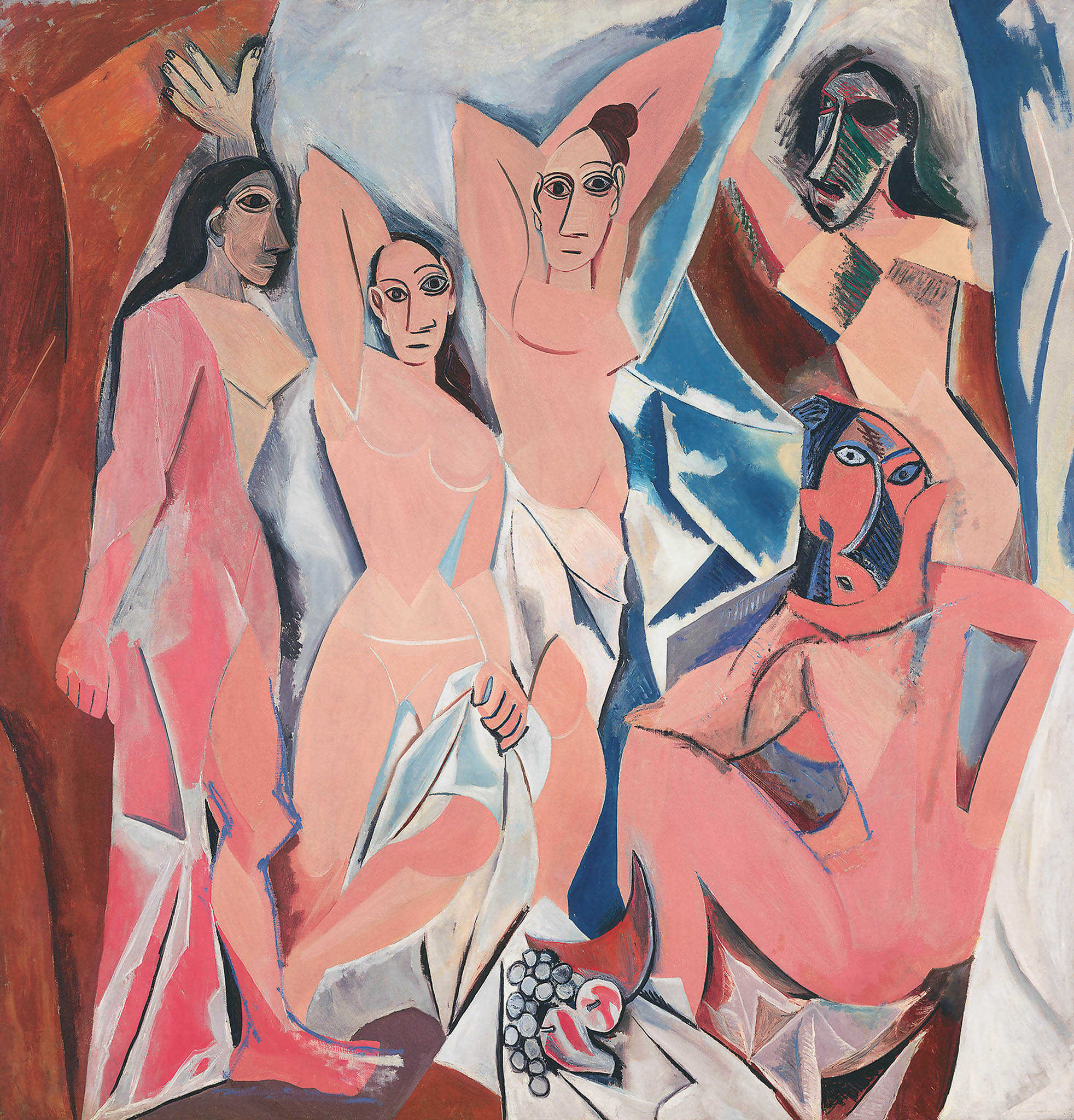
Dance II.
Oil painting on canvas. Made by Henri Matisse. Fauvism Period. Fact 1: Since Matisse and Picasso had such different styles, especially with Matisse pioneering fauvism, many art historians saw his painting Dance II and believed it was made as a rebuttal to Picasso's painting Les Demoiselles d'Avignon. Fact 2: One difference between the two paintings is the shapes that can be seen. For example, Picasso's painting has very rigid shapes and boxy figures. However, Matisse's painting has a very fluid motion to the figures with them dancing in a circle. Fact 3: Matisse used primary colors like red, blue, and green to make the painting seem bright, like it is taking place during the daytime.
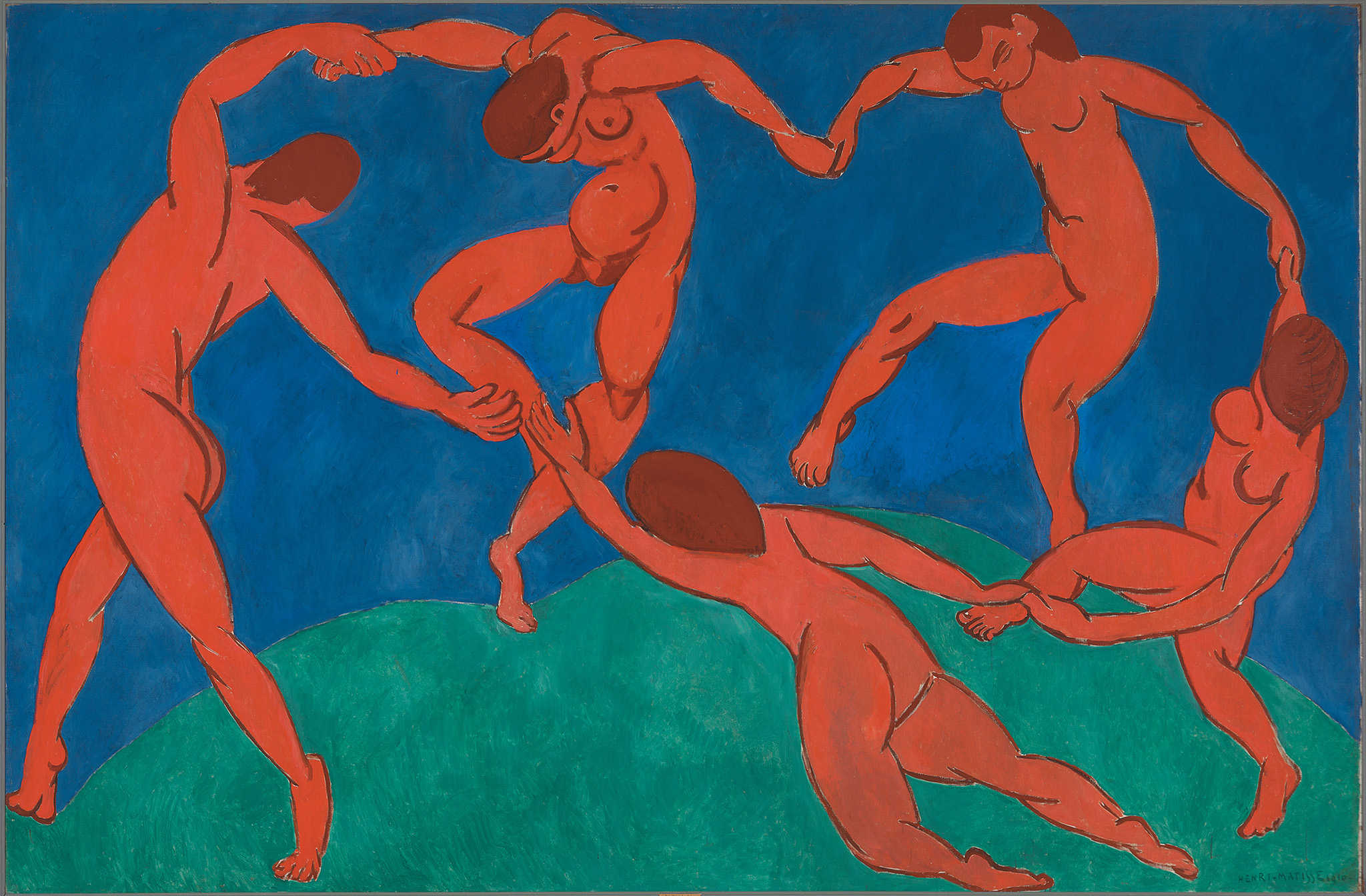
Violin and Pallette.
Oil painting on canvas. Made by Georges Braque. Cubism Period. Fact 1: Since Picasso and Braque were prominent artists around the same time they would often work together and paint similar themes. Sometimes viewers could not even tell the difference between the two artists' paintings. Fact 2: Both artists painted objects in an illusionist style, creating them in a three-dimensional form. Fact 3: At the top of the painting a shadow of a nail can be seen across the palate, right above the geometrically painted sheet music.
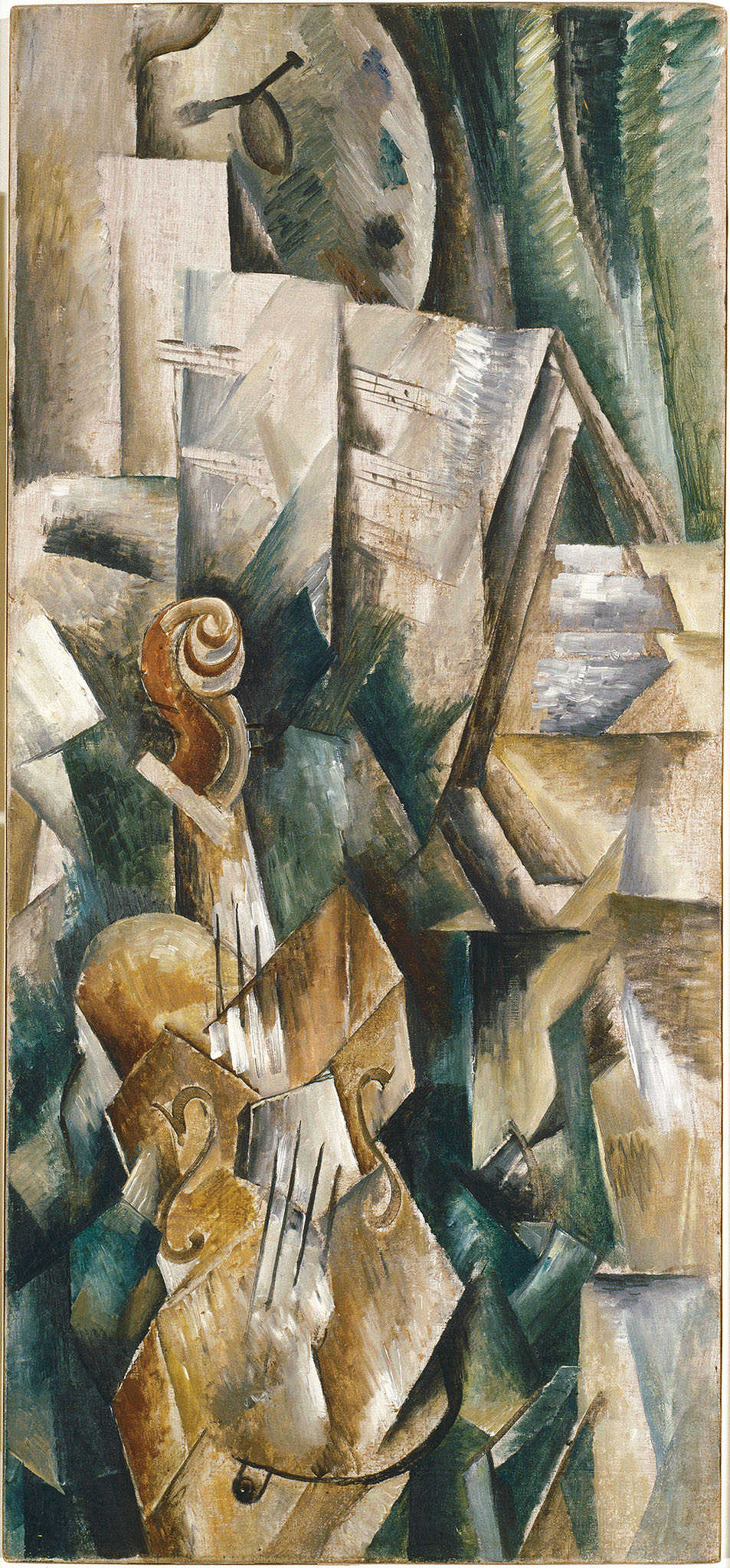
Guitar, Sheet Music, and Wine Glass.
Charcoal, gouache, and papiers-colles. Made by Pablo Picasso. Cubism Period. Fact 1: Collages became popular within the modern art movement, with artists like Picasso combining paint, paper, rope, fabric, and various other mediums to create new images. Fact 2: At the bottom of the work is a newspaper piece that translates to "The battle has begun". This could be a statement about the state of society at the time the work was produced, or a statement directed towards his fellow artists. Fact 3: Many elements of this work are neutral colors with browns, tans, and black. However, in the middle sits a bright blue rectangular shape that stands out among the other elements.
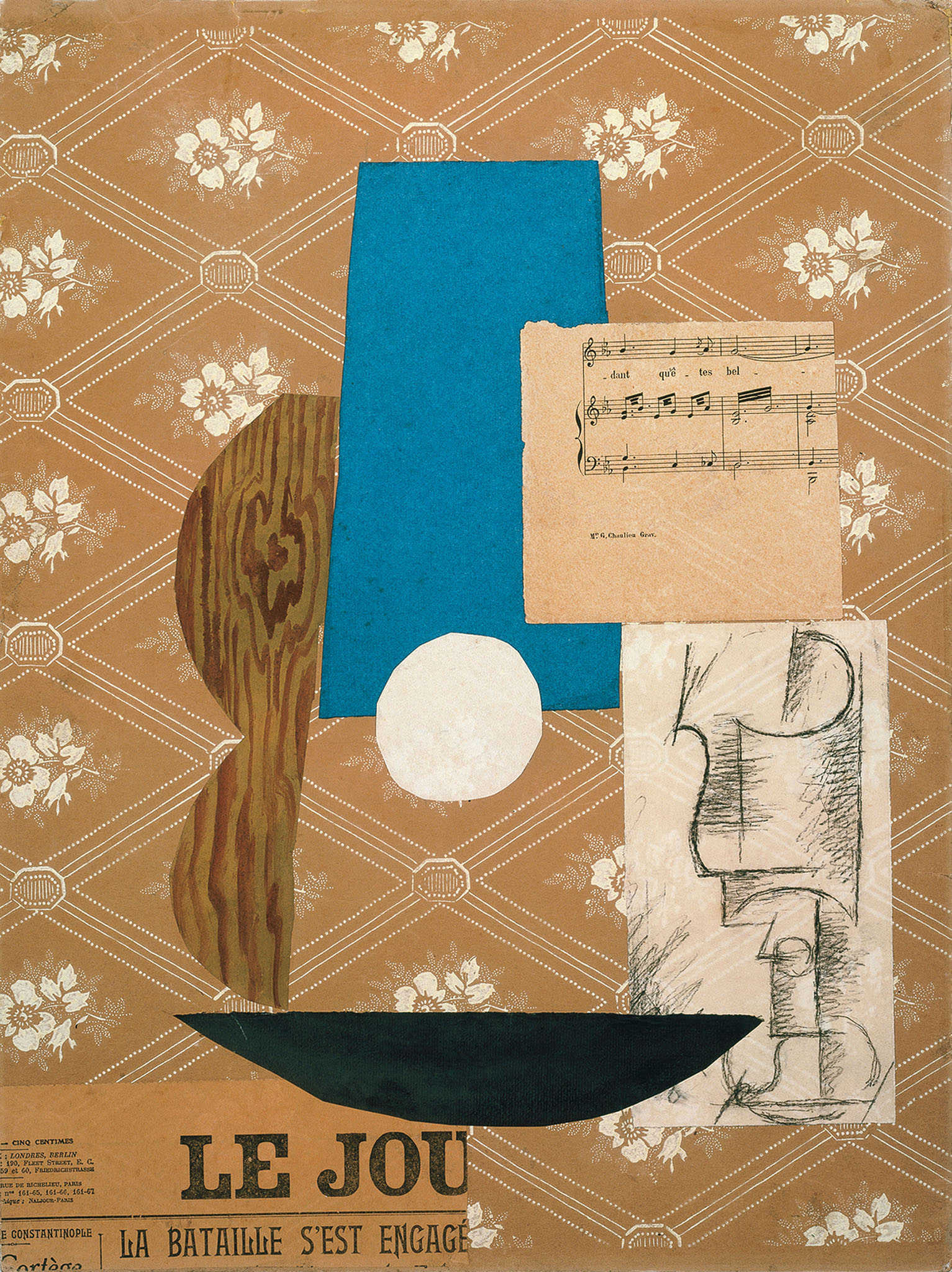
Unique Forms of Continuity in Space.
Bronze statue. Made by Umberto Boccioni. Futurism Period. Fact 1: When viewing Boccioni's Unique Forms of Continuity in Space, art historians were reminded of the sculpture Nike of Samothrace from Ancient Greece. Fact 2: This statue is likely a depiction of a woman, with her form being distorted as if she is moving quickly. Fact 3: Boccioni made this work in a series of twelve sculptures, yet only five are still in tact today.
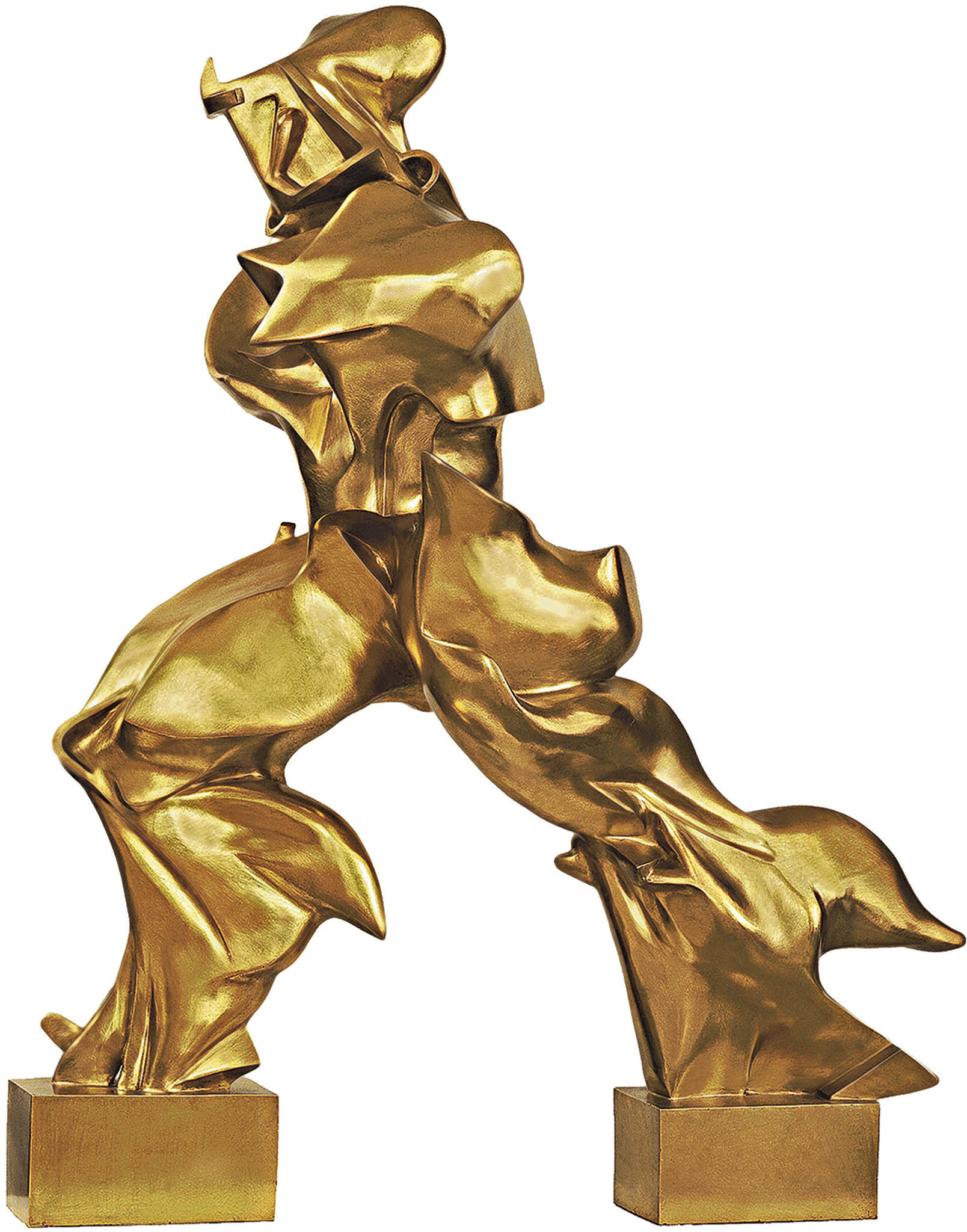
Composition VII.
Oil painting on canvas. Made by Wassily Kandinsky. Expressionism Period. Fact 1: Kandinsky's theme for Composition VII was the idea of the Apocalypse, and the bright explosion of colors on this canvas represent that the Apocalypse has started. Fact 2: He painted contrasting colors like yellow and blue, red and green to create representations of intensity and the social middle class. Fact 3: Kandinsky also felt that linear components of his paintings, such as lines and shapes, could represent dance. For example, Composition VII could be interpreted as a musical dance.
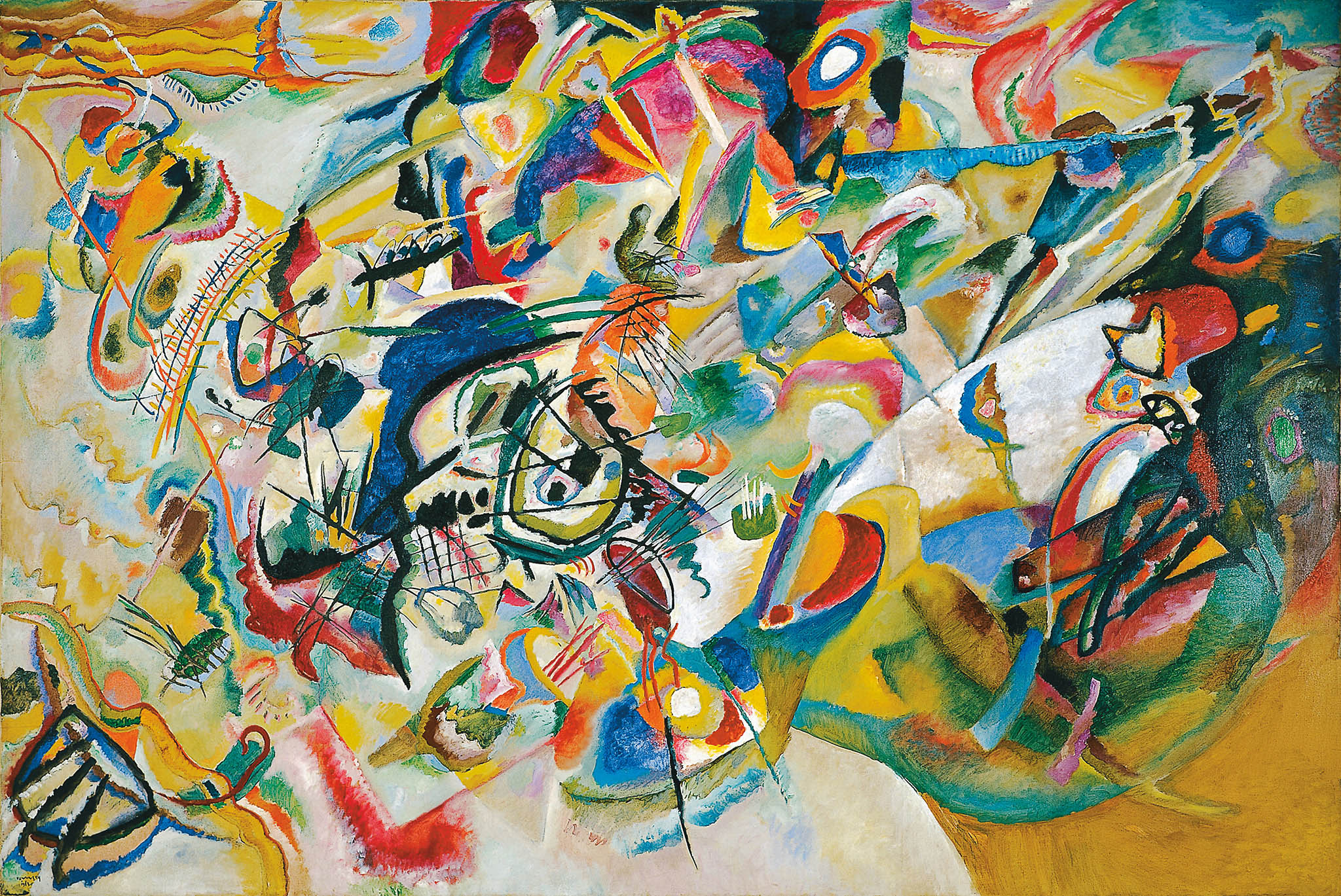
Flower Hammer.
Painted paper. Made by Jean (Hans) Arp. Dadaism Period. Fact 1: In 1917, a group of artists decided to open their own gallery called Galerie Dada. Inside there were numerous artworks that fit into the style of dadaism and challenged social norms while conveying each artist's unique concept. Fact 2: One of these works is Arp's Flower Hammer. This relief sculpture was made using wood that Arp stacked on top of one another randomly. Fact 3: When designing the wood pieces, Arp would draw on a piece of paper and create wild shapes without picking up his pencil. Then he sent this outline to be cut into wood.
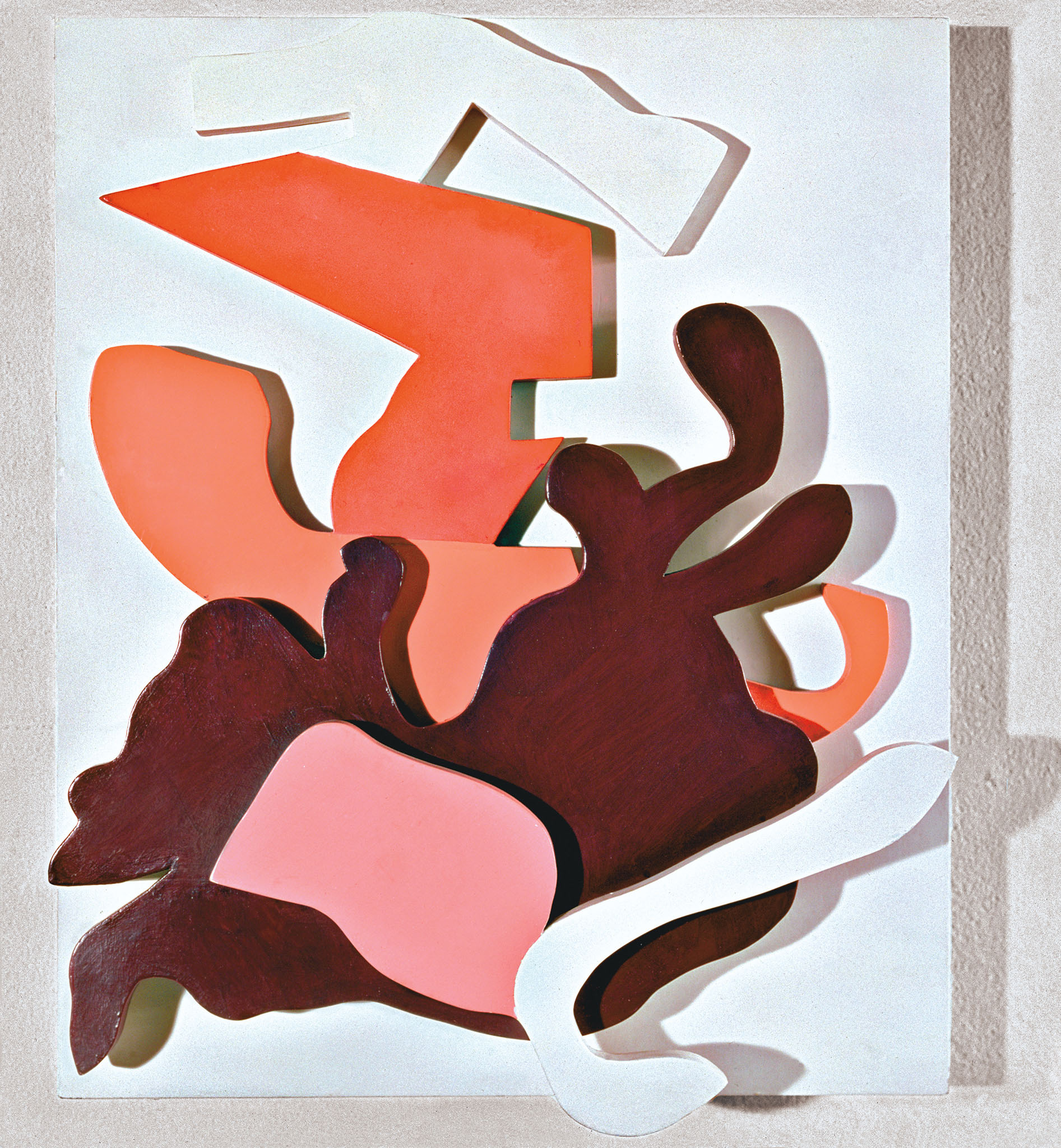
Nude Descending the Staircase
Oil painting on canvas. Made by Marcel Duchamp. Dadaism Period. Fact 1: In 1913, this work by Duchamp was on display in the U.S. at the "Armory Show" where many Americans got to witness French artwork for the first time. This show featured a vast collection of artwork from Picasso and Van Gogh to Monet and Delacroix. Fact 2: Most viewers at the show ridiculed this work and disliked how the figure was indecipherable, saying it looked messy. Fact 3: Duchamp was clearly influenced by other artists of the dada period. Some of these include Picasso and Braque's use of shapes and lines within the cubist style to create figures. Duchamp also drew inspiration from the futurist style's use of motion in his painting, depicting the woman moving swiftly enough that her figure is distorted.

Fountain.
Porcelain sculpture. Made by Marcel Duchamp. Dadaism Period. Fact 1: This work by Duchamp was meant to shock the American audience and challenge their previously accepted definition of art. Fact 2: He submitted this work to a showing in 1917, in a gallery where he also served on the committee of, so he could ensure it was accepted into the showing along with every other artwork that was submitted. Fact 3: By turning a urinal into a work of art, that meant the bathroom fixture was also a commodity. Duchamp wanted to challenge the idea of art as a commodity to be purchased and exchanged for monetary value.
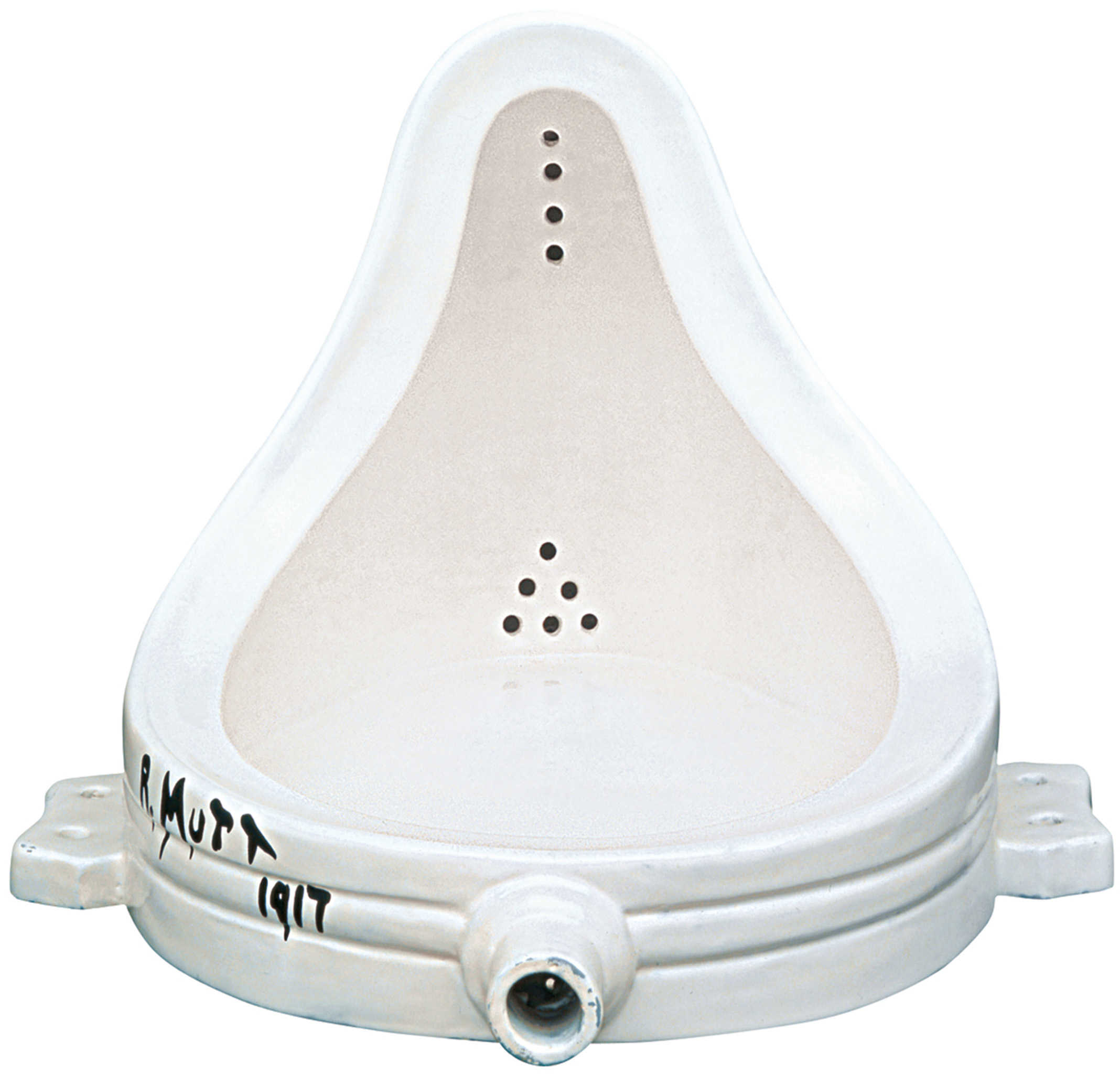
In the North.
Casein tempera on hardboard. Made by Jacob Lawrence. Harlem Renaissance Period. Fact 1: Lawrence moved to Harlem where he studied art and drew inspiration from Aaron Douglas. One example of this is in his work In the North, where he uses a similar angularity to Douglas to demonstrate the girls' rising educational skill level. Fact 2: Color also plays an important role in this work. Viewers can notice the bright color of the girls' dresses and the fact that they are each dressed in a primary color. This is meant to further emphasize the significance of the primary years of education. Fact 3: This work is just one out of a series of sixty paintings that tell the true story of African American life living in Harlem with some paintings depicting scenes of race riots, destruction of black owned homes, and illness outbreaks from overcrowding. However, Lawrence also painted scenes of hope for the future in the North, just like this piece.
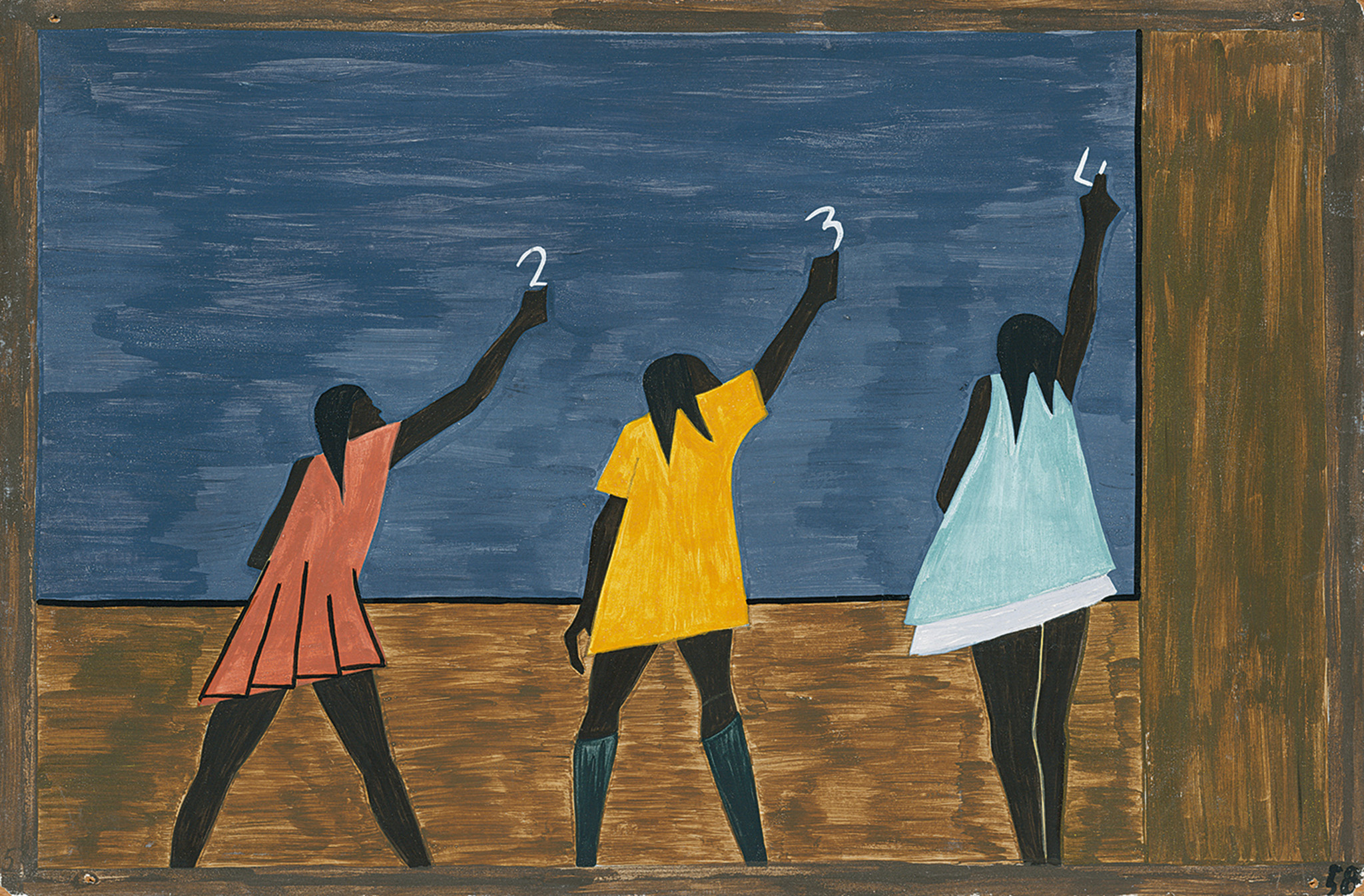
The Master's Bedroom.
Collage of gouache and pencil on paper. Made by Max Ernst. Surrealism Period. Fact 1: This work is considered one of the first visual artworks in the surrealism style, and it likely set the precedent for future surrealism works to come. Fact 2: This painting was originally a booklet of clipart that Max Ernst painted over. On the left side viewers can see a variety of animals, including some that do not usually belong together, that Ernst decided not to paint over. He did the same thing on the right side, choosing not to paint over the furniture that sits in the corner. Fact 3: Ernst did not only study art, but he also studied psychology, including many works by Sigmund Freud. This likely influenced his style of art within surrealism and drawing inspiration for his paintings from dreams.
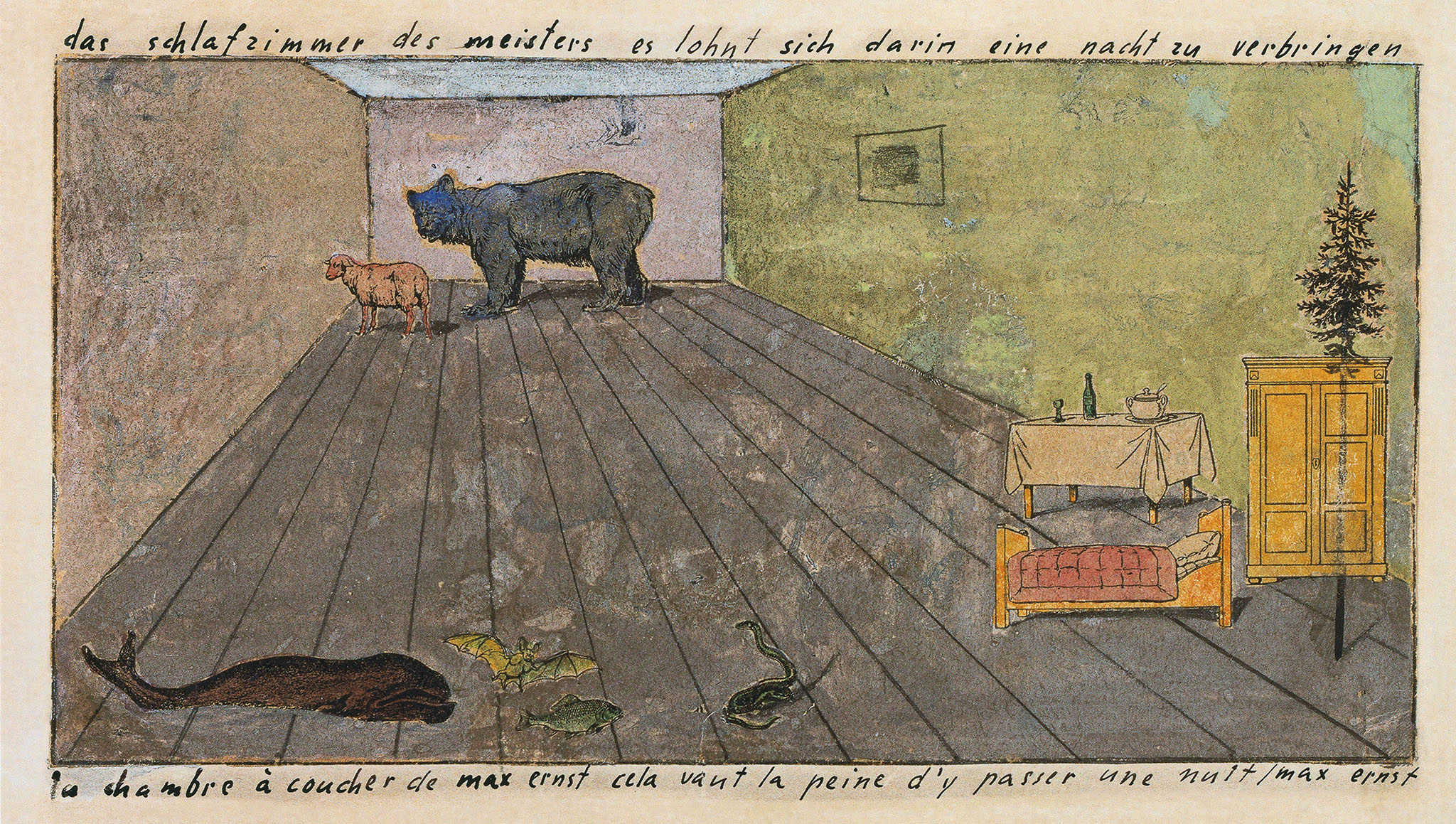
Girl Before a Mirror.
Oil painting on canvas. Made by Pablo Picasso. Surrealism Period. Fact 1: This work was inspired by Picasso's own life, with the woman in the painting being his mistress that he had an affair with while he was married to his wife Olga. Fact 2: In Girl Before a Mirror, the figure on the left side is the "real" woman, with the right side being her reflection in the mirror representing her subconscious. Fact 3: Color and shape play an important role in this work. The left side is colored in bright, warm-toned colors like yellow and red. This side likely represents the sun or daytime. On this side the woman is turned so her pregnant stomach is visible, which represents her fertility. However, on the right side the woman is colored using cool-toned blues, purples, and green. This is representative of the moon or nighttime. In the mirror, the woman is turned so her backside is in the view of the mirror, representing her sexuality.
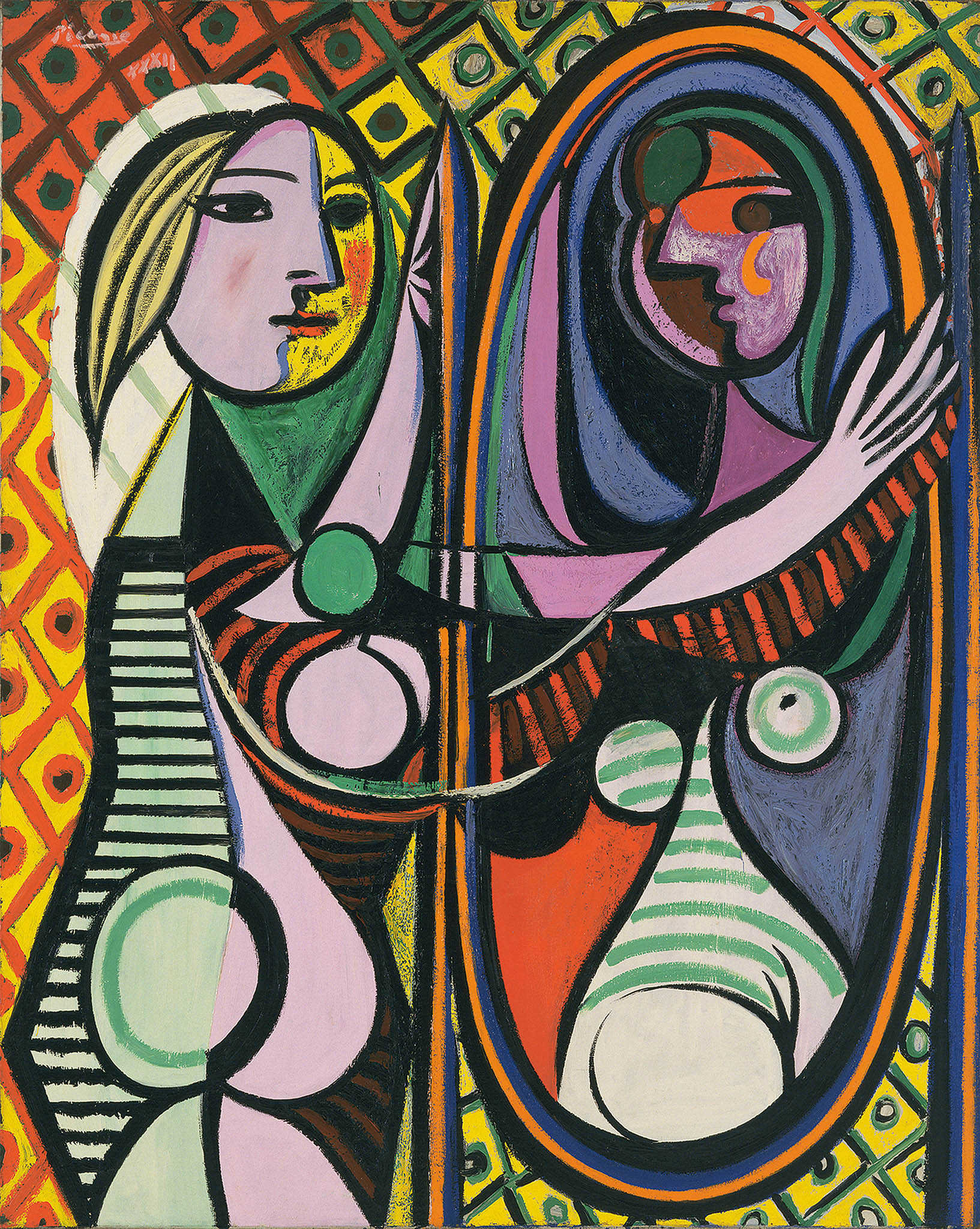
The Persistence of Memory.
Oil painting on canvas. Made by Salvador Dali. Surrealism Period. Fact 1: Salvador Dali also drew inspiration from his dreams and hallucinations for his surrealist paintings too. The most well-known example of this is his painting The Persistence of Memory. Fact 2: Dali paints a version of himself in this work, sleeping on the ground in the middle of the work, with a clock draped over himself. This could be representative of the fact that he would often intentionally hallucinate to escape reality. Fact 3: Vanitas symbols, or reminders of death, are also present in this work. One example being the ants, which were considered symbols of death, crawling all over the pocket watch on the left side. Another one of these symbols is the fly resting on the watch draped over the edge of the block, also on the left side.
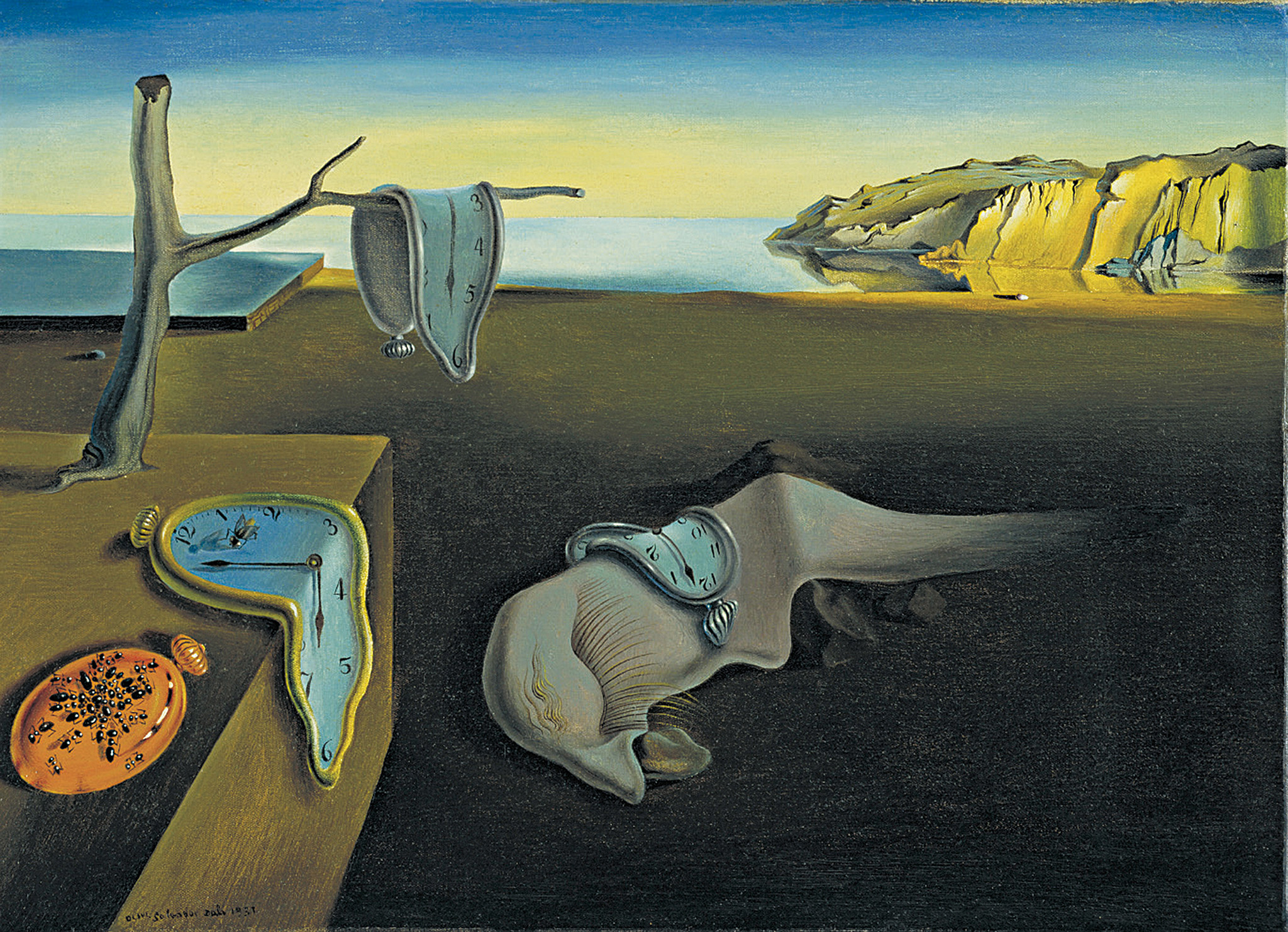
Guernica.
Oil painting on canvas. Made by Pablo Picasso. Surrealism Period. Fact 1: This painting was inspired by an attack on the town of Guernica in Spain that destroyed nearly all the houses and killed countless innocent people. Fact 2: Picasso painted this large-scale work as a dedication to the town and the horrific events that took place. He drew inspiration from the Spanish tradition of bull fighting and the feeling of violence and helplessness. Fact 3: This work features figures screaming, crying, holding deceased loved ones, and even features animals like bulls and horses. This painting was created to challenge the idea of war and the effect death has.
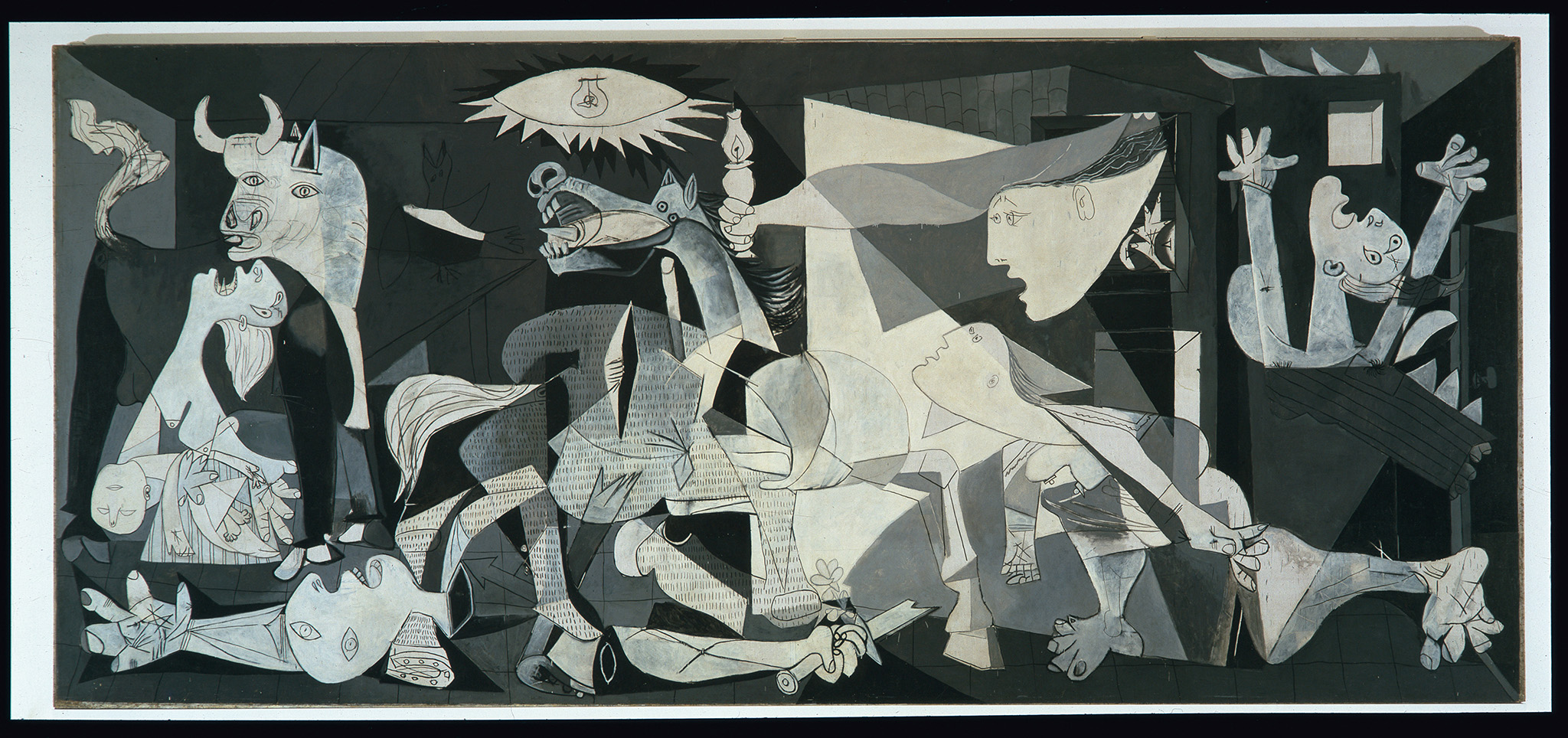
Green on Blue.
Oil painting on canvas. Made by Mark Rothko. Abstract Expressionism Period. Fact 1: In the 1940's, Rothko began painting figures in front of his trademark colorful backgrounds, but in the 50's, he began only painting color fields. Fact 2: Rothko wanted his paintings to be very intimate and personal, which led him to create very large-scale paintings, with Green on Blue being over seven feet. Fact 3: Rothko's goal was to portray human emotion, even the intense ones like tragedy. He did this by using somber colors, in hopes that his viewers would have the same emotional experience he did.
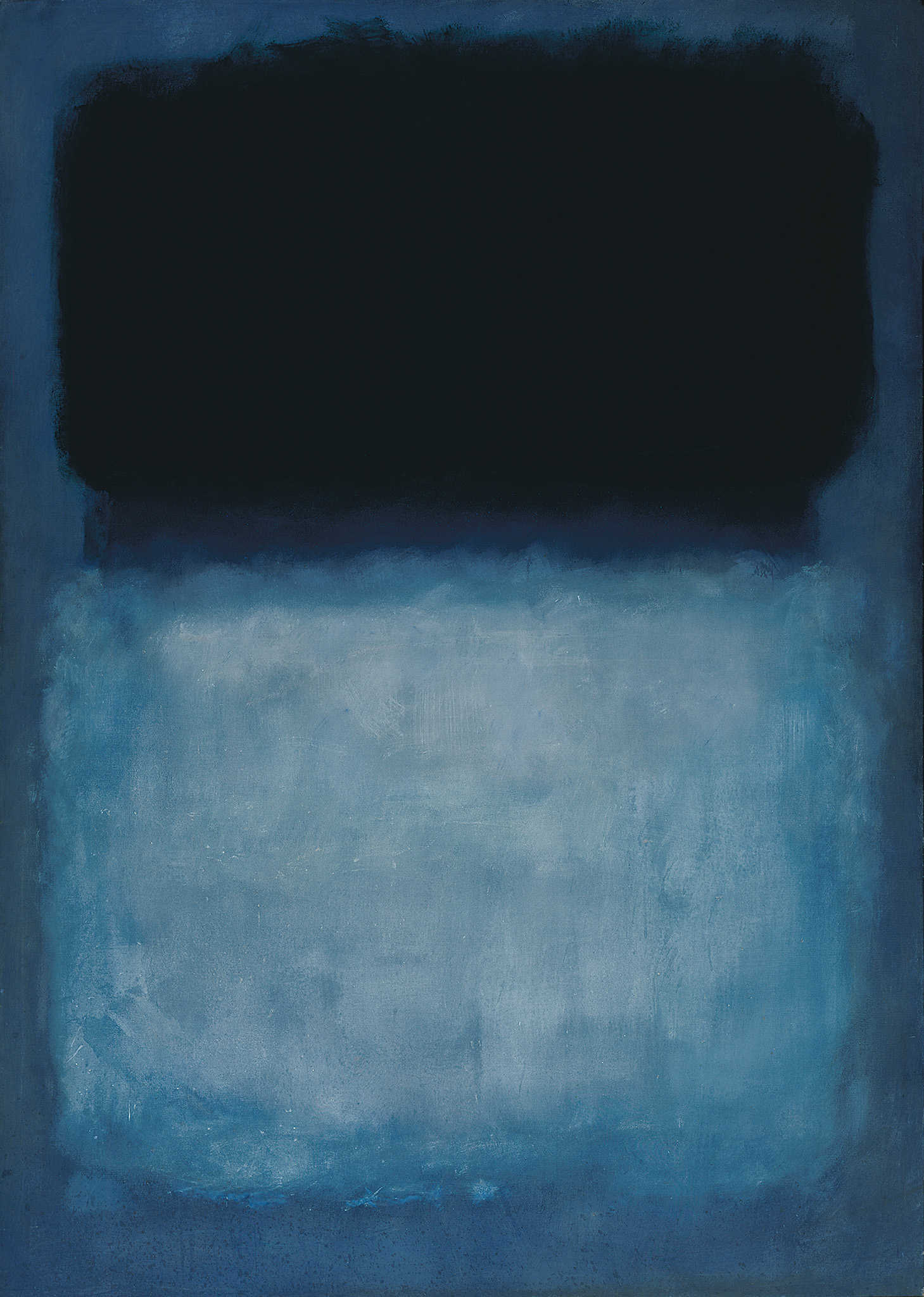
Supermarket Shopper.
Fiberglass sculpture. Made by Duane Hanson. Pop Art Period. Fact 1: This life-size sculpture is so realistic that viewers often stop to speak to it because they think she is a real person. Fact 2: This sculpture represents the changes and improvements made to America after the war, including a variety of new products and food available such as frozen dinners, plastic wrap, and Lipton tea. Fact 3: This sculpture also represents how women were still seen in the domestic sense, with it being a woman's job to grocery shop for her family.
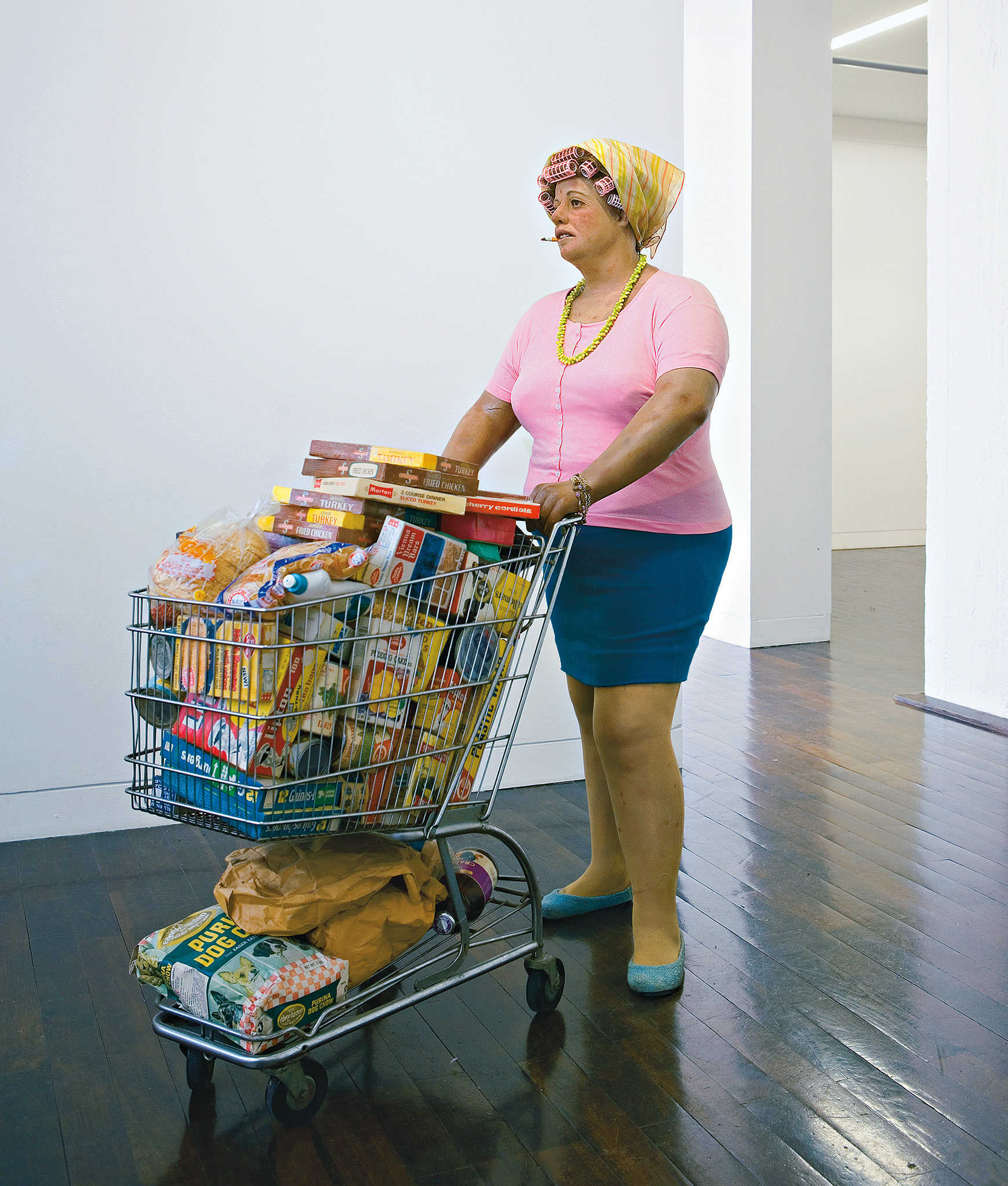
Number 27
Oil painting on canvas. Made by Jackson Pollock. Abstract Expressionism Period. Fact 1: Pollock wanted to paint the unconscious mind on canvas and explore new surrealist themes in his works, so he underwent psychoanalysis to better understand surrealist automatism. Fact 2: Pollock created large-scale abstract paintings that would later be called "action paintings" because they are filled with so much motion it can be difficult to discern the meaning. Fact 3: Jackson Pollock would be given the nickname "Jack the Dripper" due to his artistic style of dripping, pouring, and splashing paint all over his canvas to get his desired effect.

Piano Mecanique
Oil painting on canvas. Made by Joan Mitchell. Abstract Expressionism Period. Fact 1: In the Abstract Expressionism Period, much like any other period, women were often excluded from the inner circles of the elite painters and viewed as second to the men. Fact 2: After Joan moved to Paris, she lived in the house that Monet once lived in and painted there just like he did. Similarly to Monet, Joan loved water and incorporated this theme into her works. Fact 3: In her work Piano Mecanique, the white space is believed to represent water, as a reflection of weather, light, and time.
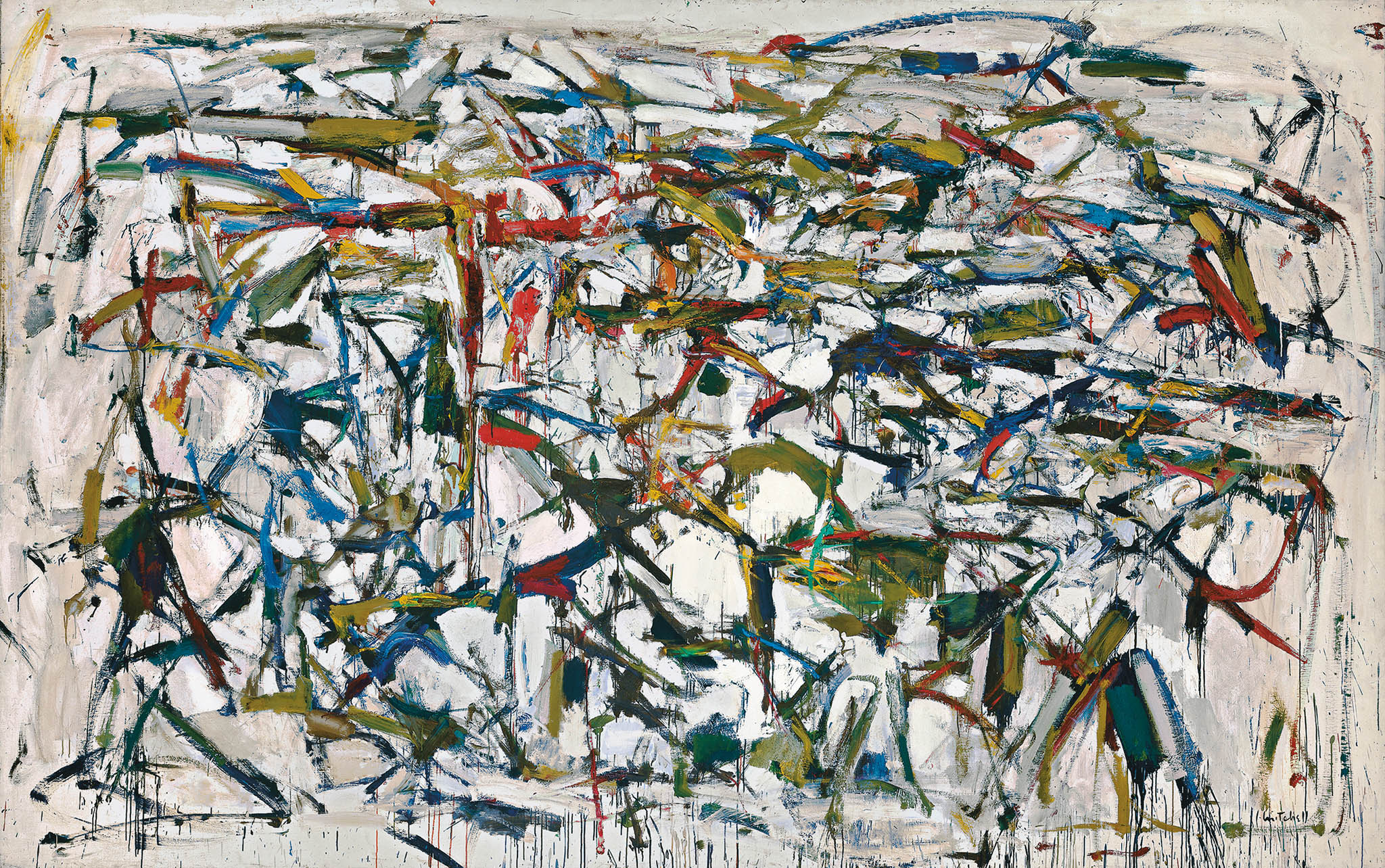
Bed.
Oil painting on bed. Made by Robert Rauschenberg. Abstract Expressionism Period. Fact 1: Rauschenberg made what he called "combine paintings" which consisted of all kinds of materials to create the work. Fact 2: This vast array of materials represents the world around him and his encounters with these materials he used. Fact 3: This work, Bed, consists of actual bed sheets, pillows, and quilts, and then dripped with paint and nail polish, and even toothpaste
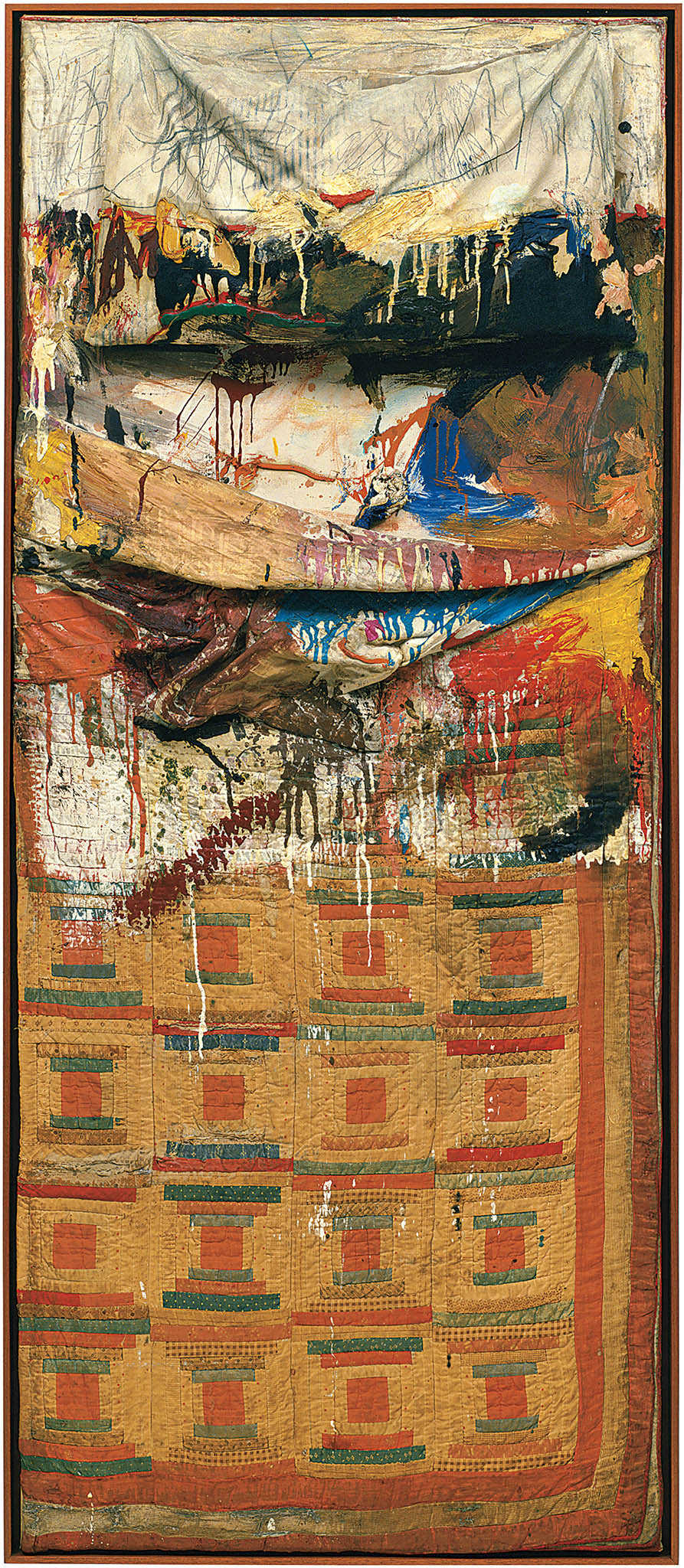
Three Flags.
Encaustic on canvas. Made by Jasper Johns. Abstract Expressionism Period. Fact 1: Unlike other painters of the time, Johns chose to create paintings with obvious subject matter, like his work, Three Flags. Fact 2: This artwork inspired a variety of emotions in its viewers, from patriotic pride to patriotic anger and laughter. Fact 3: Since the subject matter was so obvious, Johns wanted to draw attention to the technique used to apply the wax-paint to the canvas, making it more abstract.
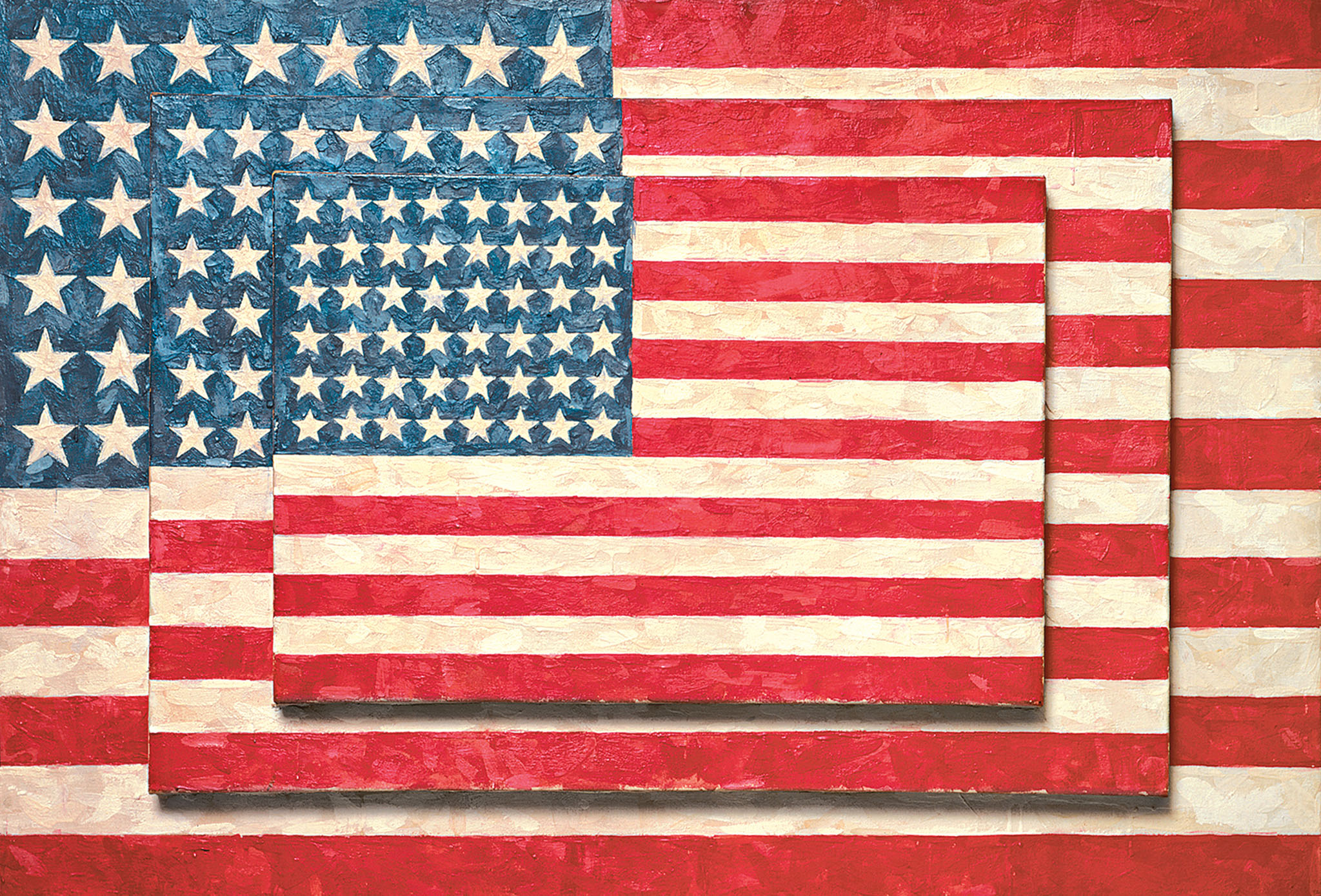
Marilyn Diptych.
Oil painting and silkscreen on canvas. Made by Andy Warhol. Pop Art Period. Fact 1: Warhol was obsessed with the idea of Hollywood and its famous stars. He was also interested in the idea of the false image these stars got from being in the spotlight. This inspired many of his works, especially works featuring Marilyn Monroe. Fact 2: Instead of hand painting his later works, Warhol used a silkscreen machine and hired employees to manage the machines for him in his studio. Fact 3: This work, Marilyn Diptych, Warhol was inspired by the death of Marilyn Monroe, specifically her suicide, to create a work in which her image was displayed over and over until it became unrecognizable.
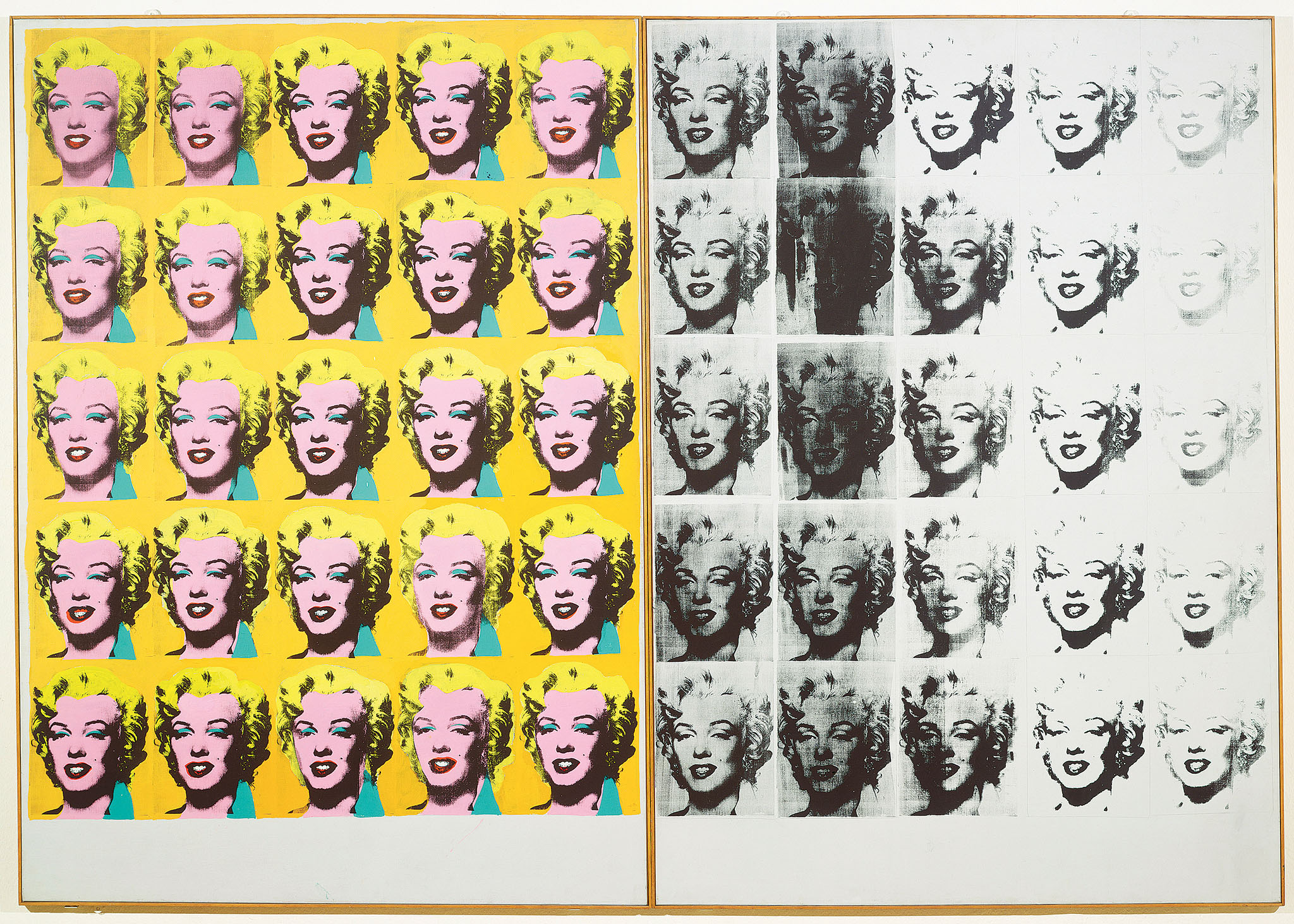
Oh Jeff… I Love You, Too… But…
Oil painting on canvas. Made by Roy Lichtenstein. Pop Art Period. Fact 1: This painting by Lichtenstein used techniques created by Benjamin Day to create shading effects by using tiny little dots. This technique was believed to be a parody of Seurat's style of pointillism. Fact 2: In this work, the word "love" is devoid of its meaning by the addition of the word "but" at the end of the sentence. This is representative of the fact that Lichtenstein noticed the abstract style was becoming very easy to replicate without the same emotion needed to produce it. Fact 3: This painting is so large that it almost mirrors Hollywood billboards in size and texture.
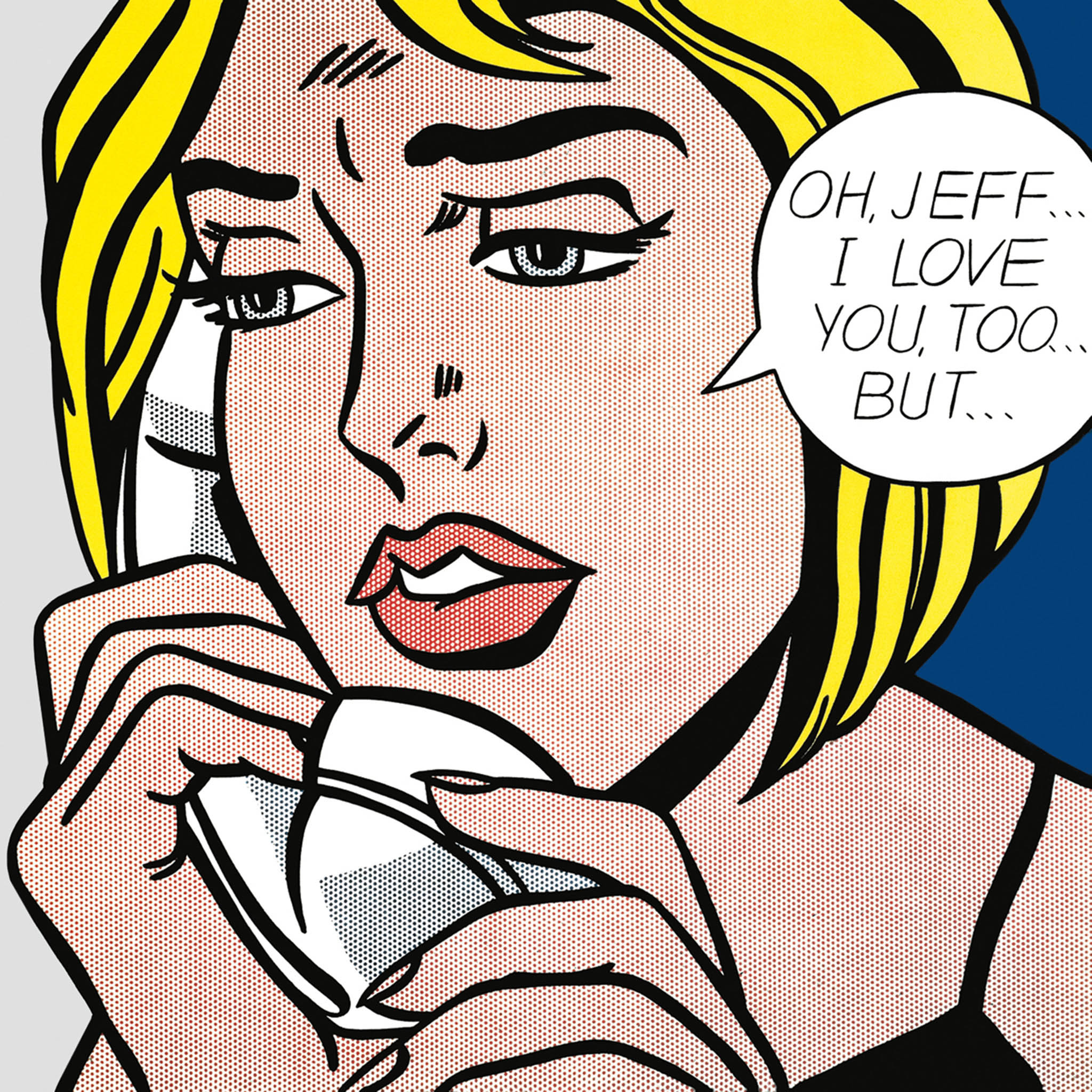
Charles the First.
Graffiti art. Made by Jean-Michel Basquiat. Post-Modernism Period. Fact 1: This painting is a dedication to the great saxophonist Charlie Parker, who was considered a black hero. Fact 2: Basquiat gave himself the graffiti tag SAMO, using a three-pointed crown as his symbol. This crown represents the fact that Basquiat considered himself the king of graffiti. Fact 3: There are many significant symbols in this work, some of them being related to superheroes like Superman and the X-Men. This is a representation of his own African American heroes and how they are hated by their worlds
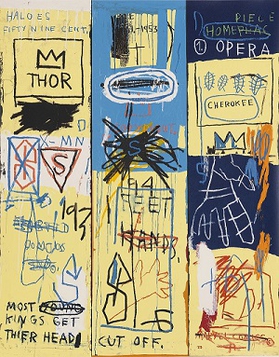
Q. And Babies? A. And Babies
Offset lithograph. Made by Ron Haeberle, Peter Brandt, and the Art Workers' Coalition. Post-Modernism Period. Fact 1: This poster was inspired by reports of American soldiers murdering innocent people from the village of My Lai during the Vietnam War. Fact 2: During this time in America, art played a huge role in politics, with artists having a strong influence over their audiences. The Art Worker's Coalition used this to oppose the war. Fact 3: In an interview, one of the soldiers that was at Mt Lai stated that men, women, and children were shot and killed. The interviewer asked, "And babies?" and the soldier responded, "And babies." This quote was placed on the poster and distributed around the world to support the anti-war effort.
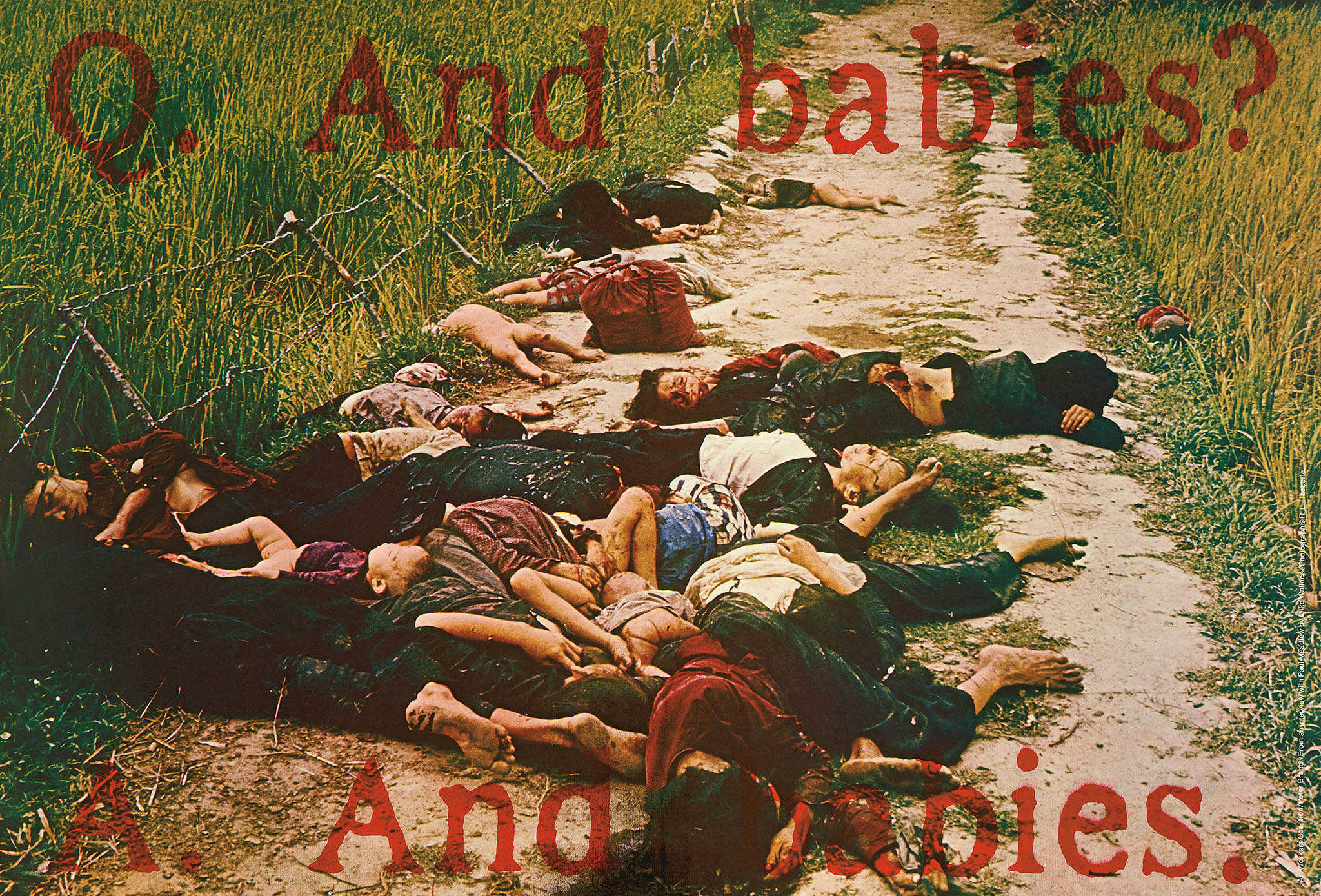
The Dinner Party.
Mixed Media. Made by Judy Chicago. Post-Modernism Period. Fact 1: Even throughout the 60's and 70's, women struggled to earn their place in the art world. Artworks like The Dinner Party challenged the idea that women did not belong in the art world and asserted power for the women's art movement. Fact 2: This mixed media work consists of a triangular table with a total of 39 place settings, and 999 other names inscribed on the floor, all for influential women from history. Fact 3: This work explicitly features female anatomy in its drawings, needlepoint, and ceramics. However, this was not done with sexual intentions, it was meant to represent the idea that female anatomy was all these women had in common, since they all came from different walks of life and accomplished different things.

Dancing House.
Building. Made by Frank Gehry and Vlado Milunic. Post-Modernism Period. Fact 1: This building was inspired by the famous Fred Astaire and Ginger Rogers, a dance duo. The curved tower is believed to represent Ginger, with the concrete tower representing Fred. Fact 2: Some believe that the glass tower symbolizes the future spirit of the people, and the concrete tower symbolizes the past. Fact 3: Inside this building there is a hotel, restaurant, and gallery that is home to works from Czech artists as well as artists from all over the world.
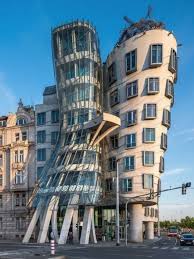
Portrait (Futago).
Photograph. Made by Yasumasa Morimura. Post-Modernism Period. Fact 1: Many Japanese artists chose to isolate their art from Western influence. However, Morimura chose to do the opposite and pose himself as Manet's Olympia and her maidservant. Fact 2: By using images from Western culture, Morimura highlights the fact that both Olympia and her maid are slaves to male dominated society. Fact 3: The word "Futago" in Japanese means "twins", further supporting the idea that Olympia and her maid are twins, meaning they are in the same situation and share an identity.
